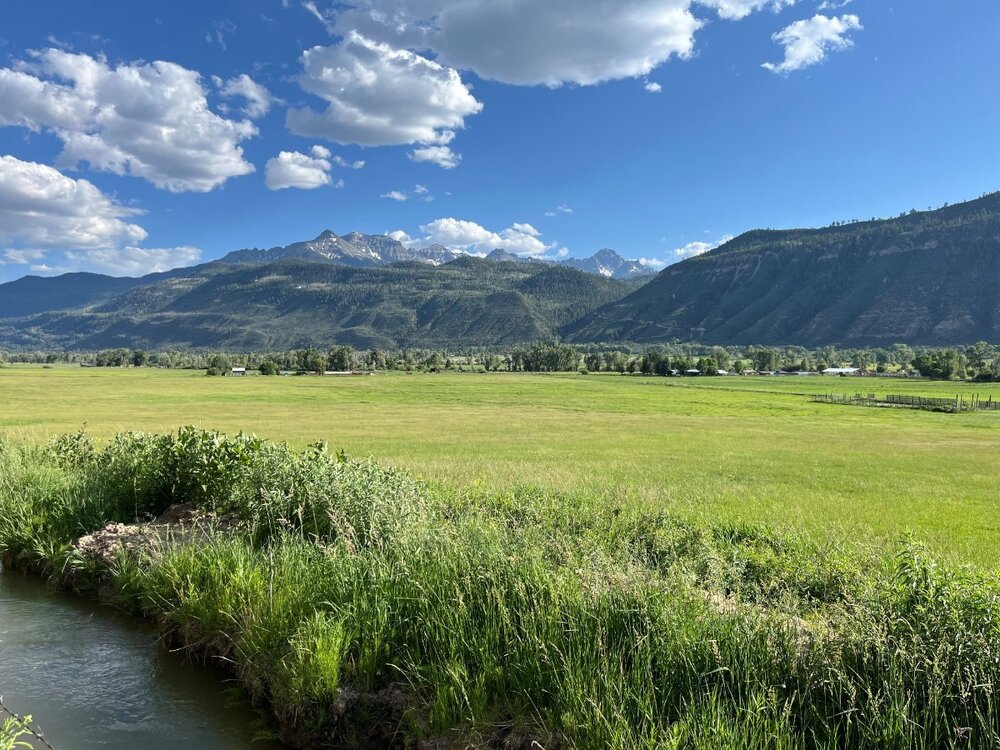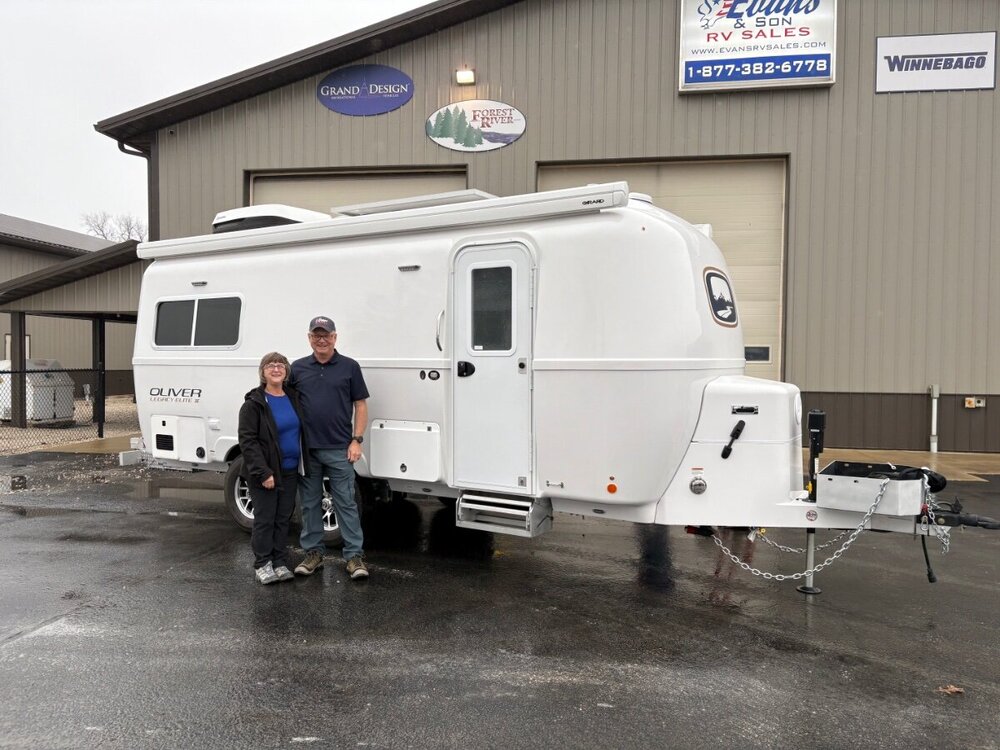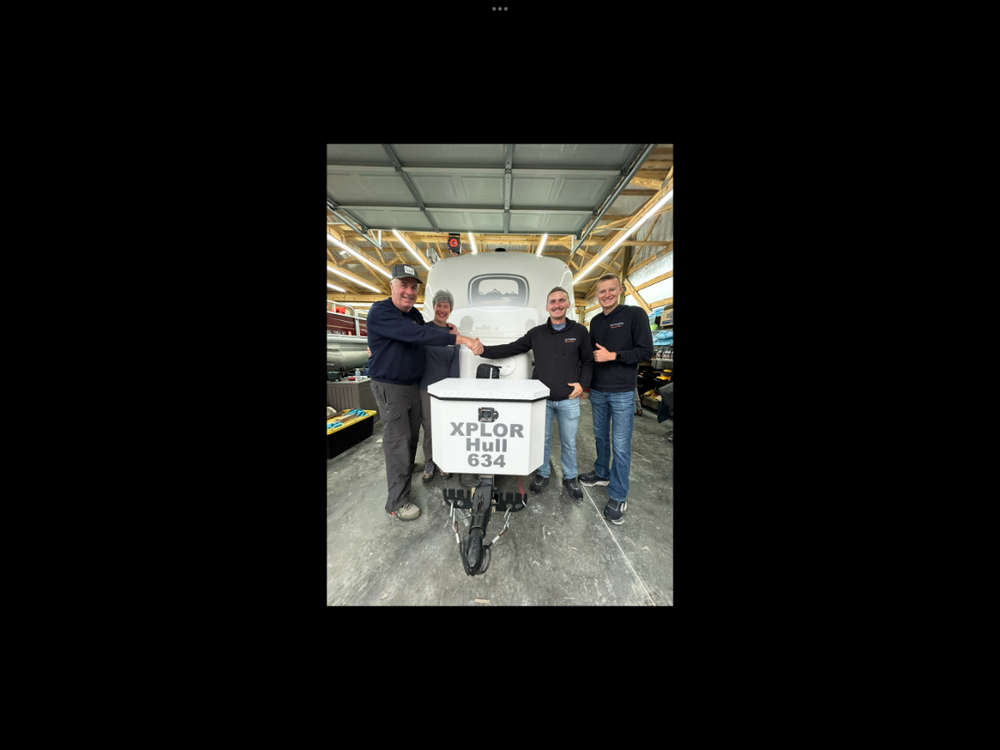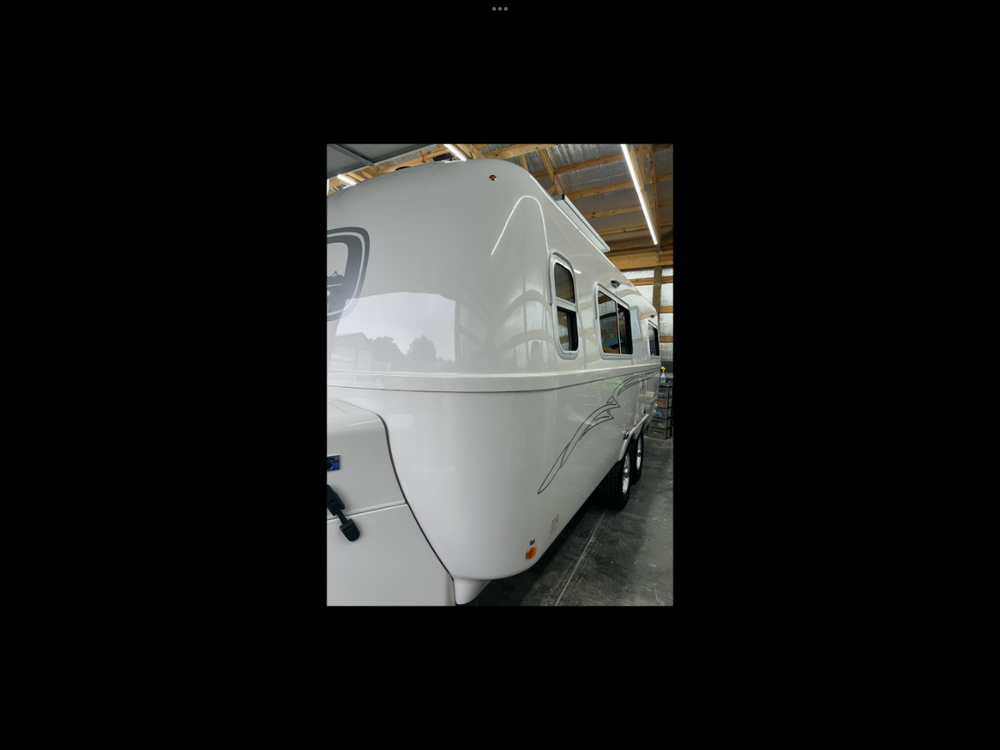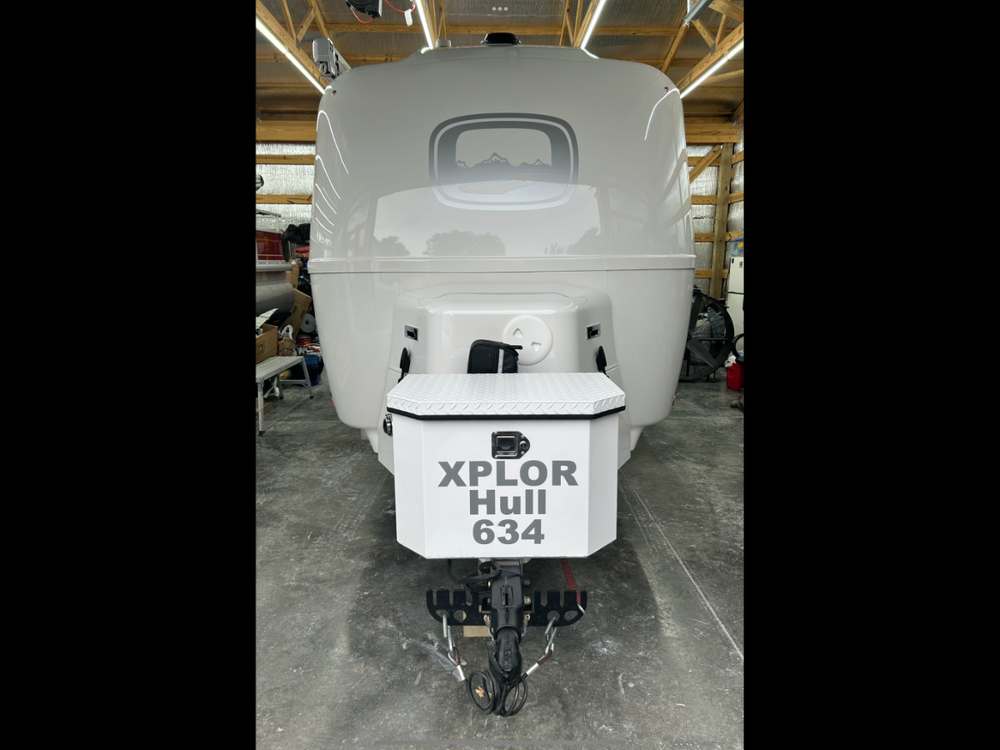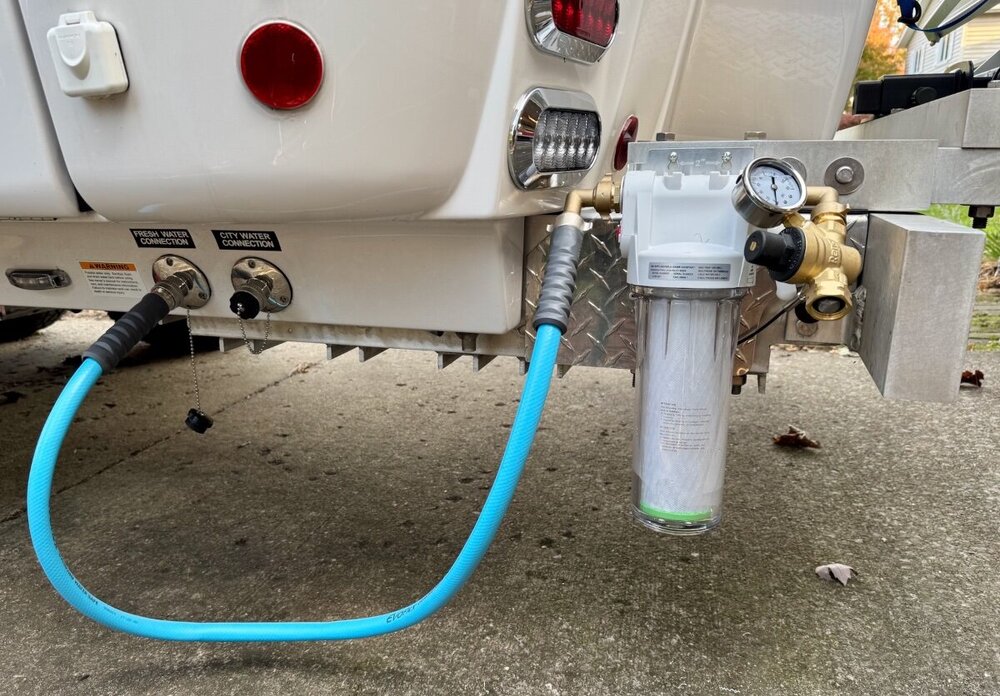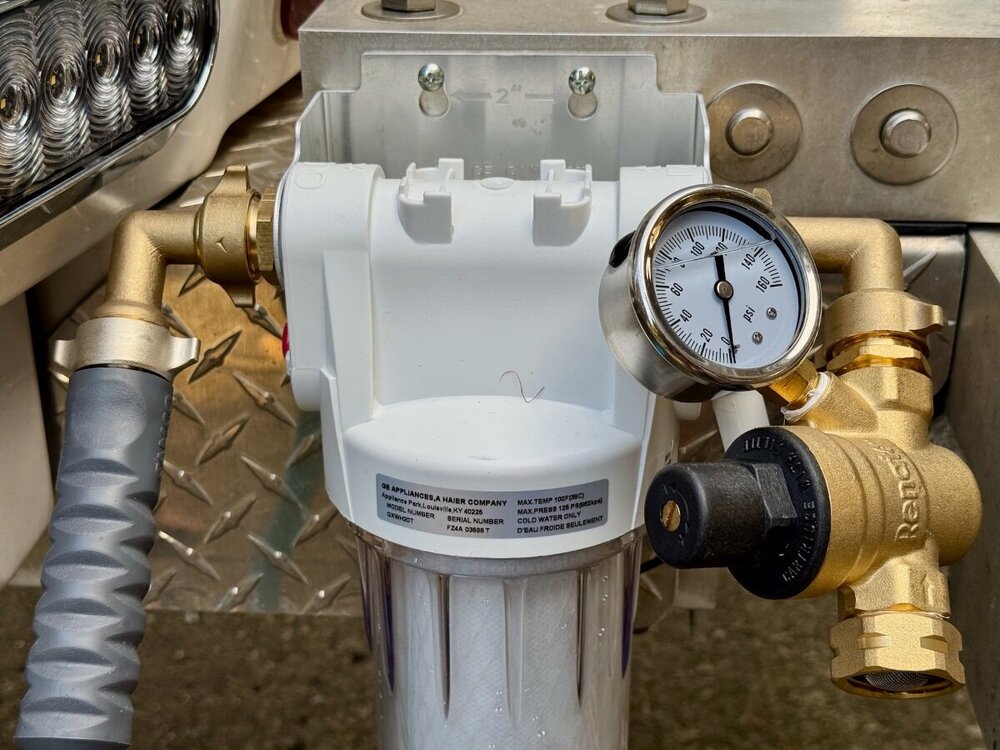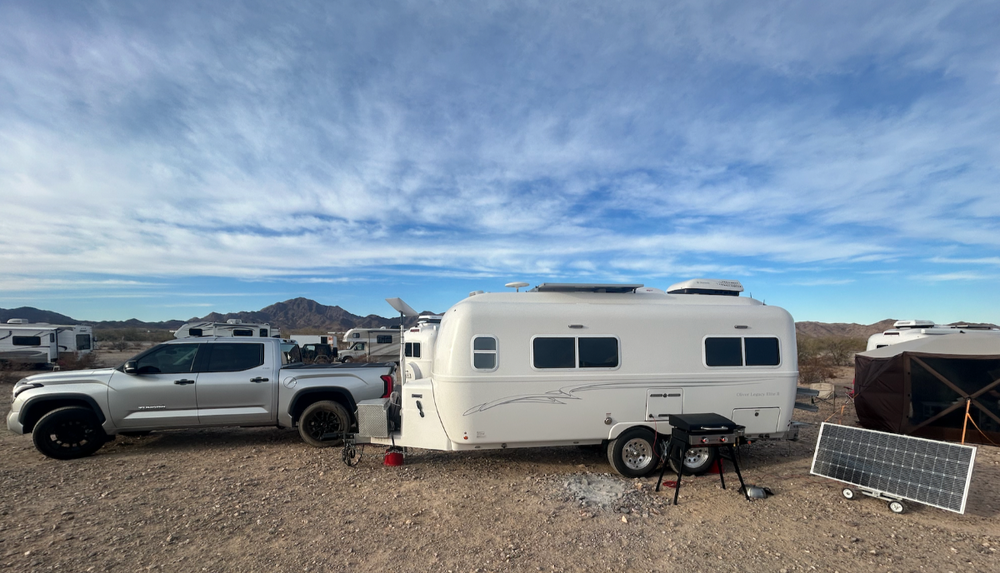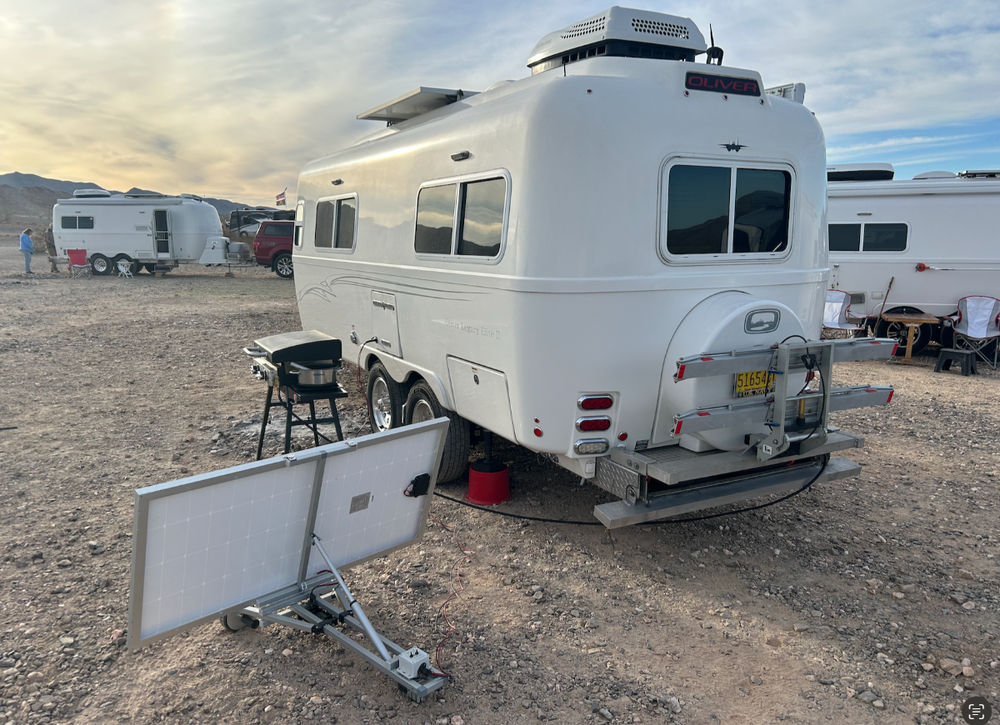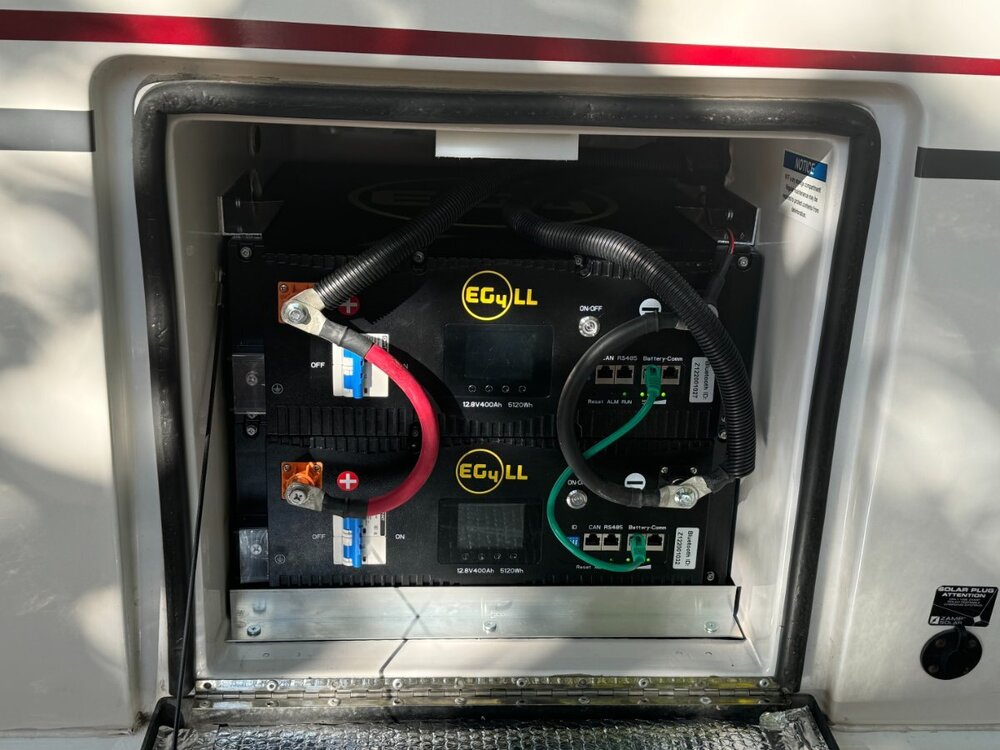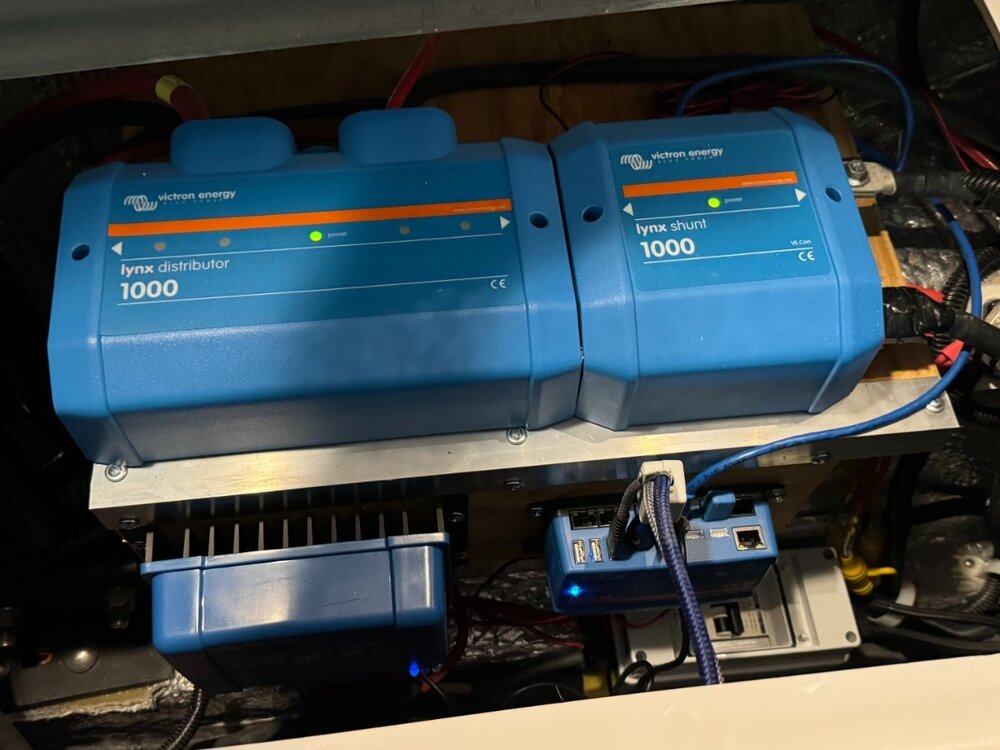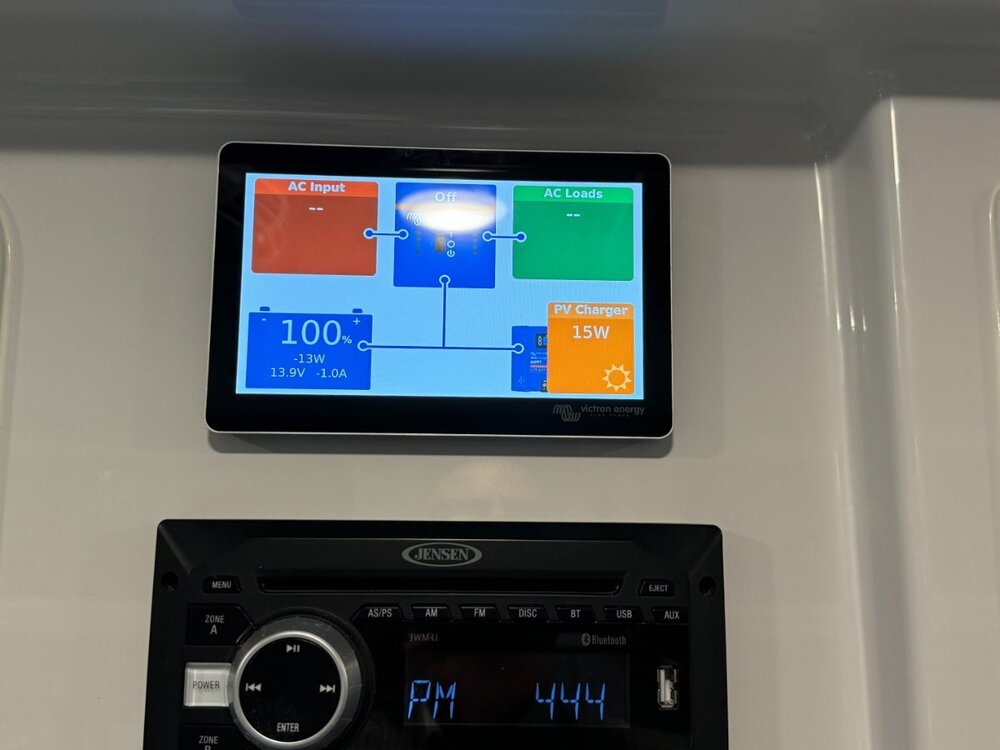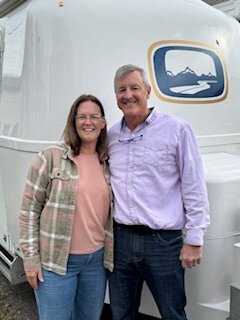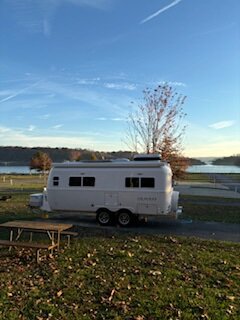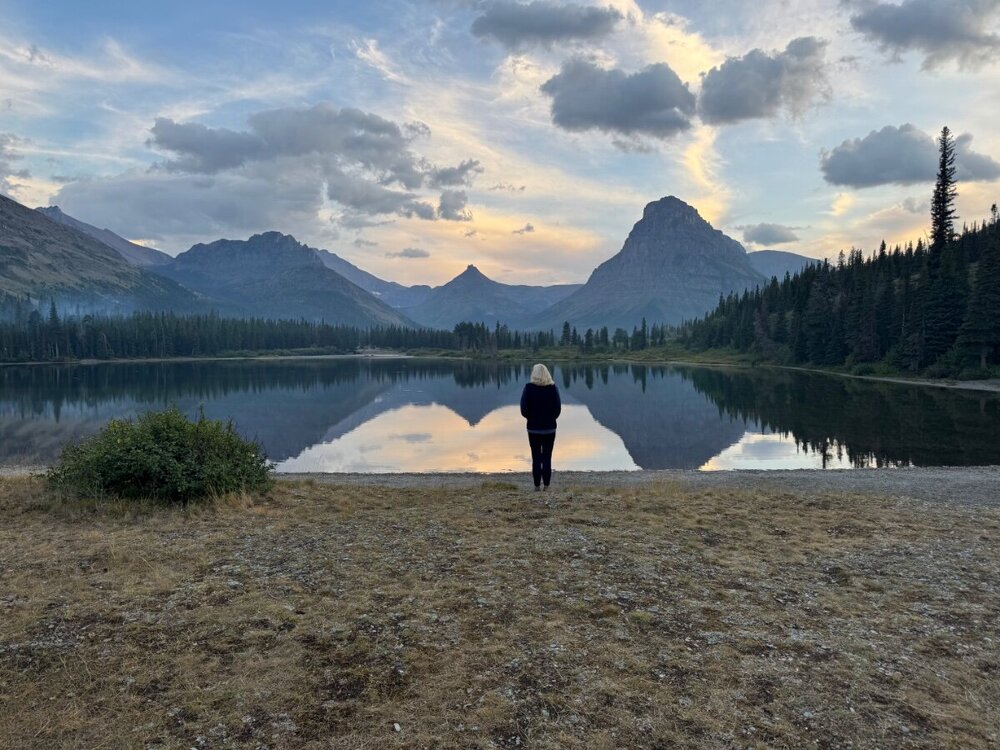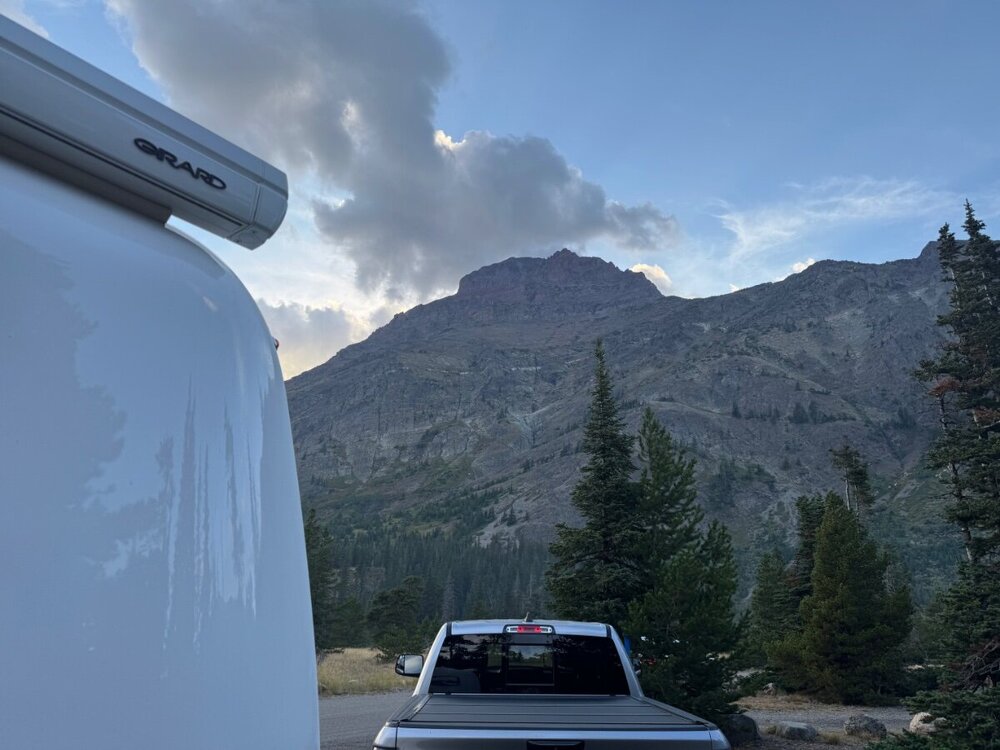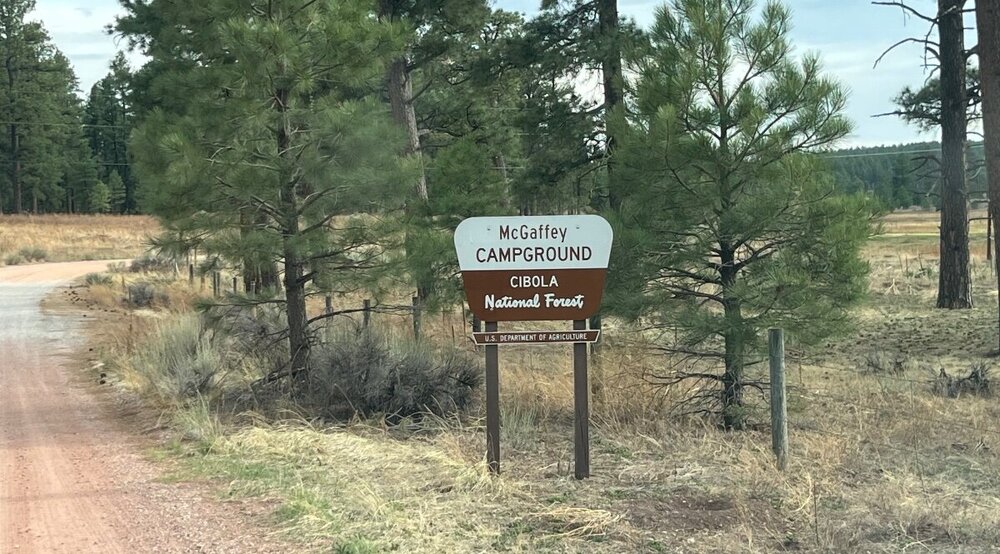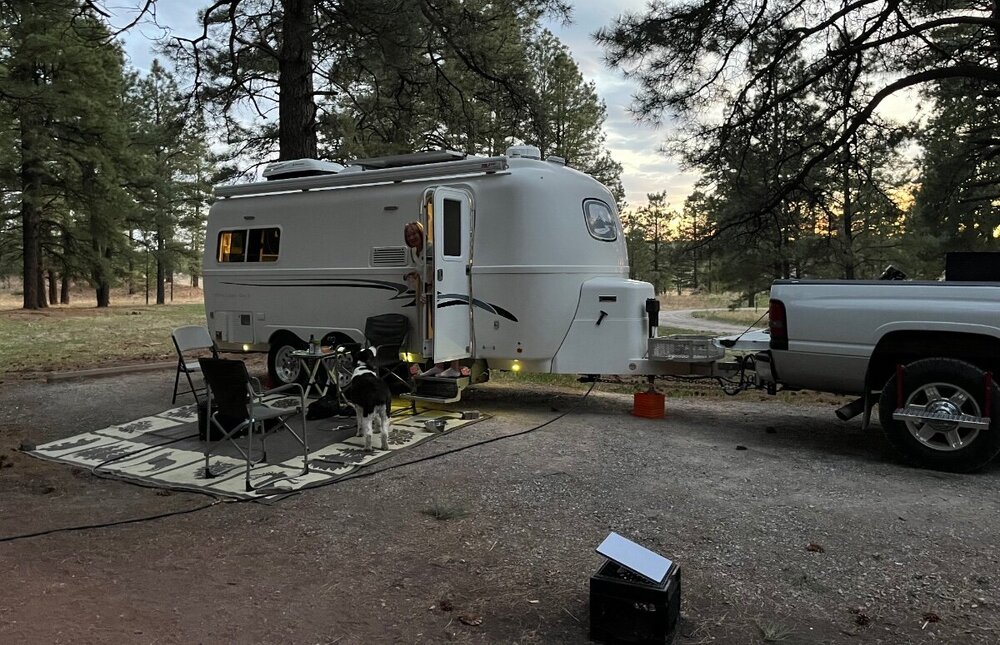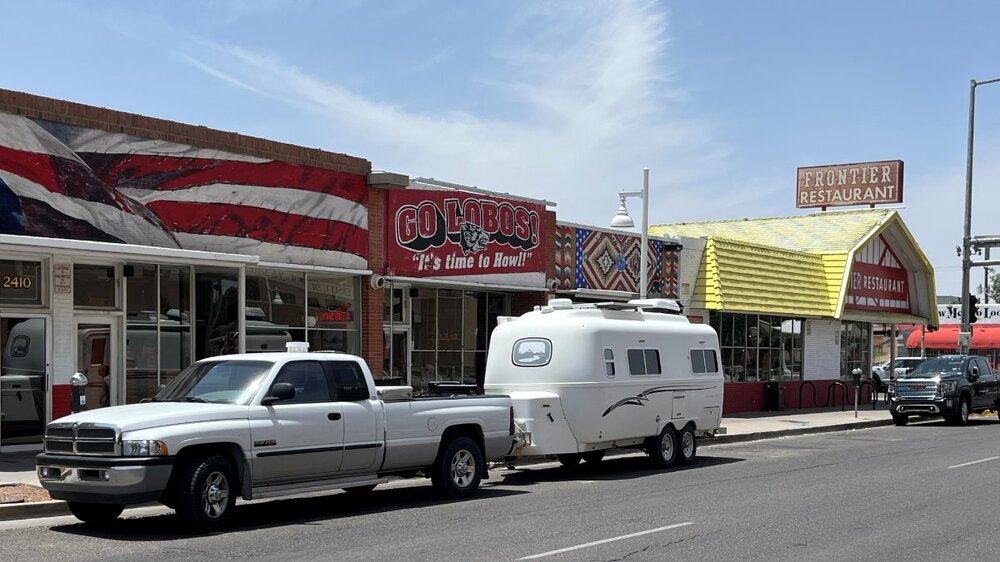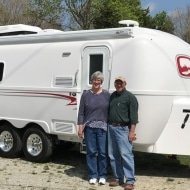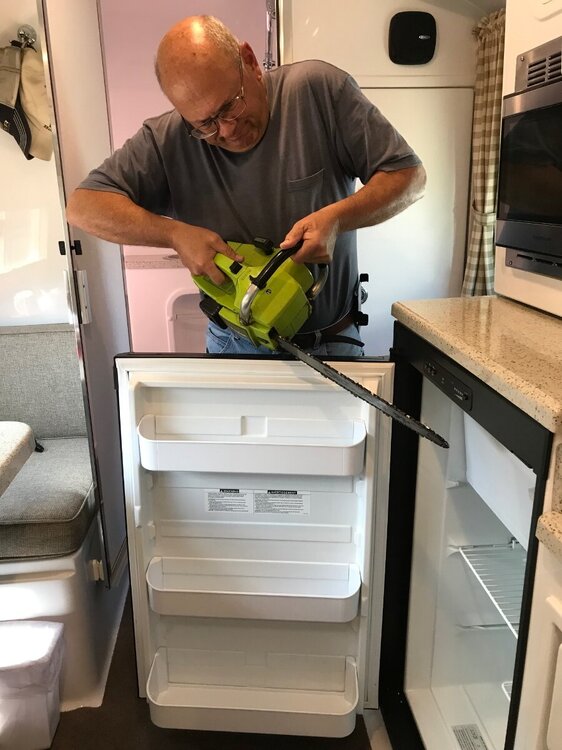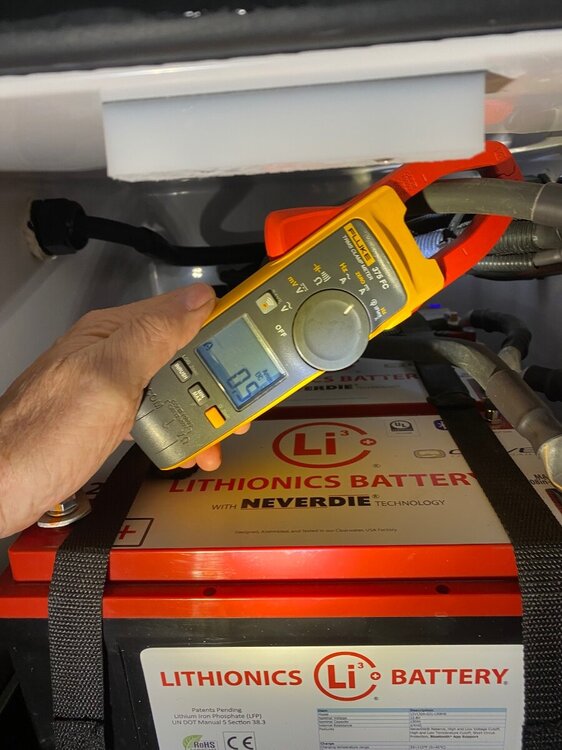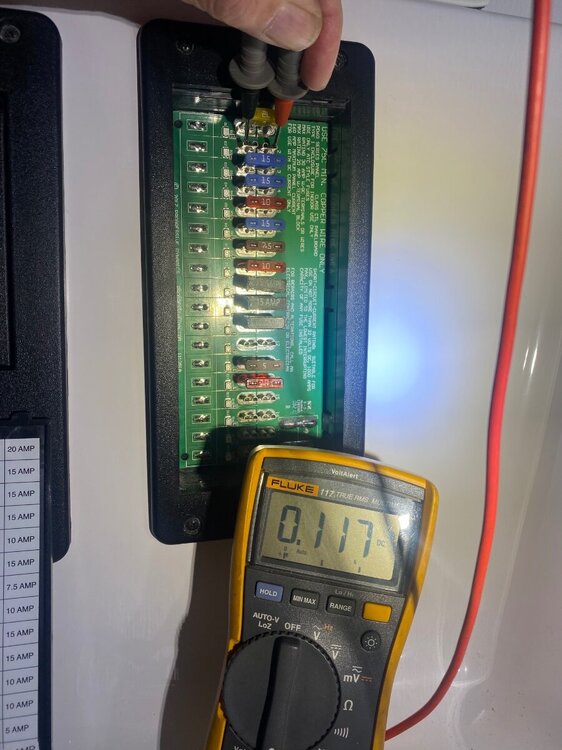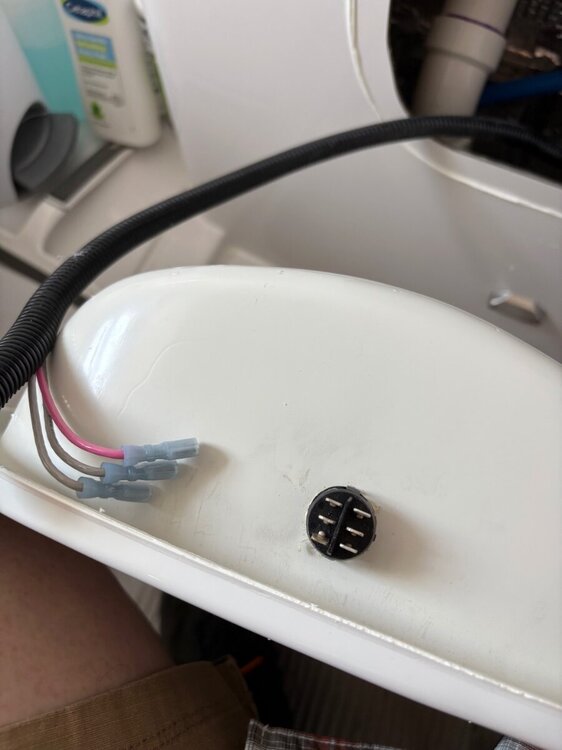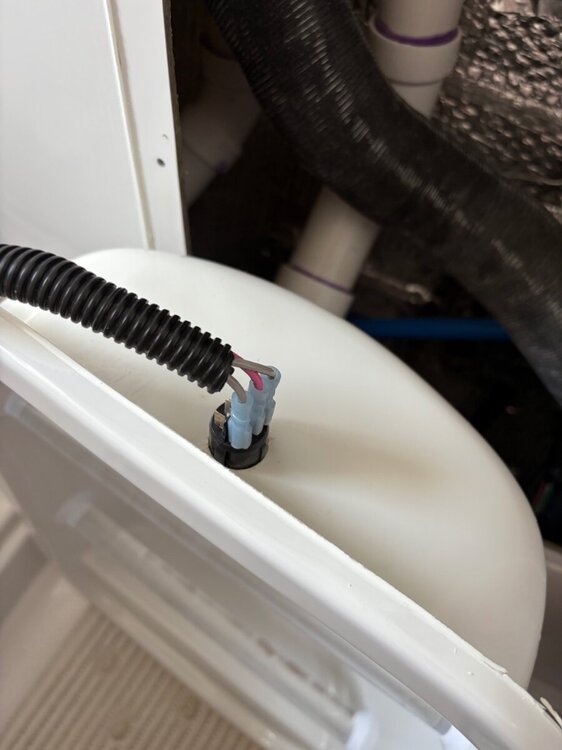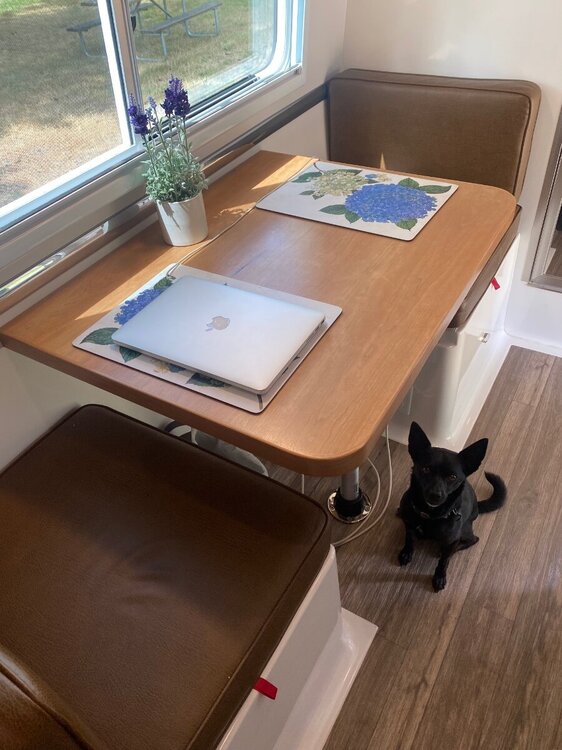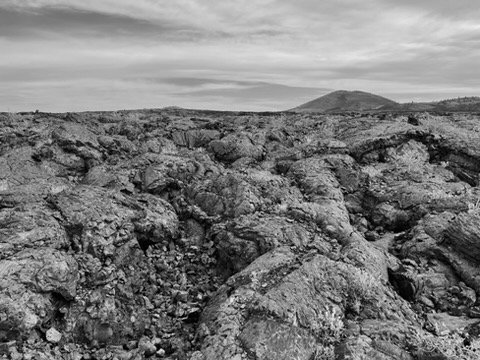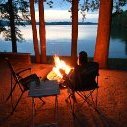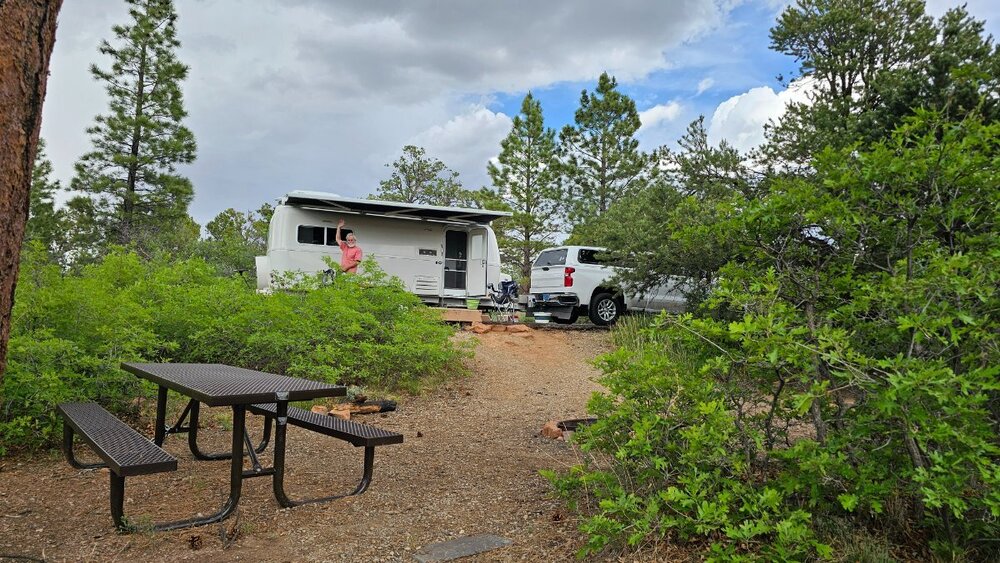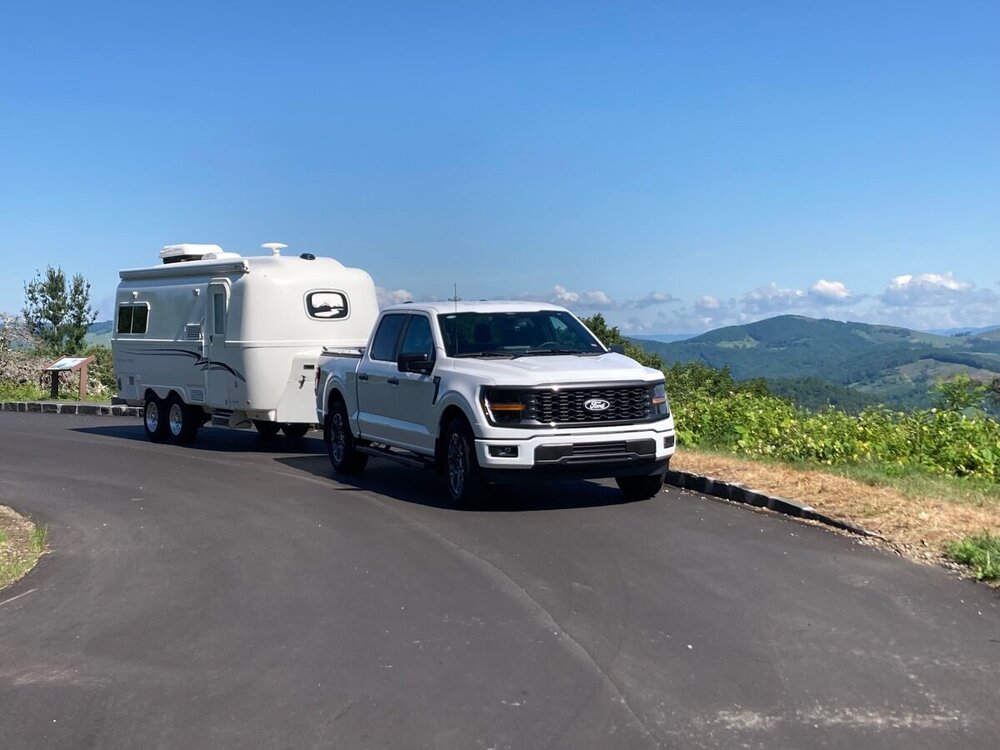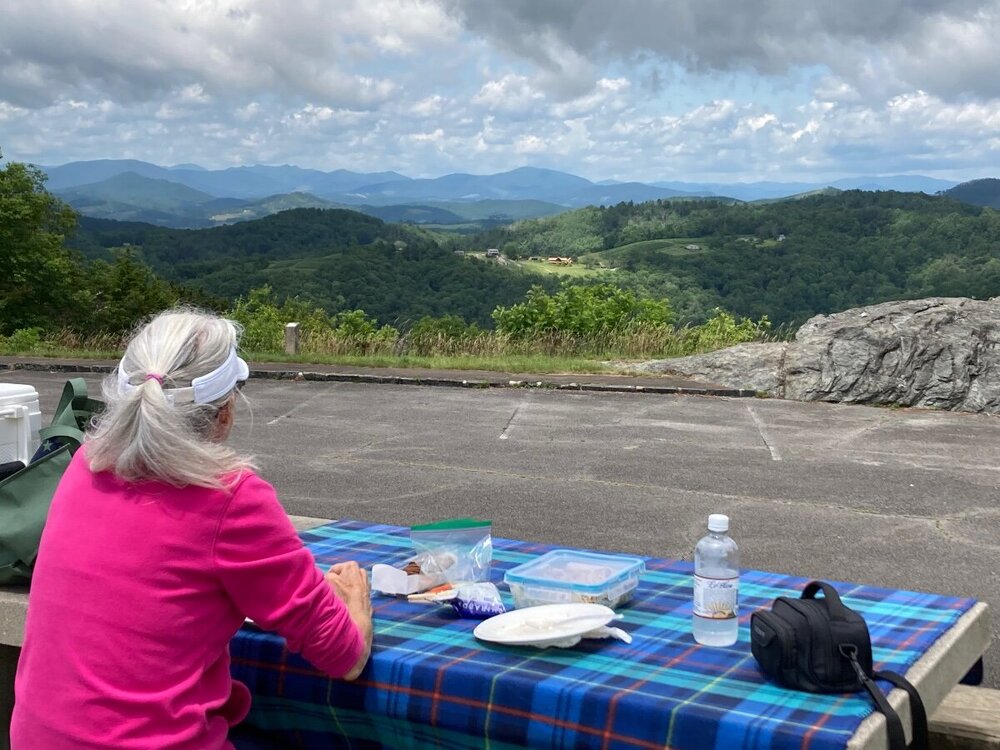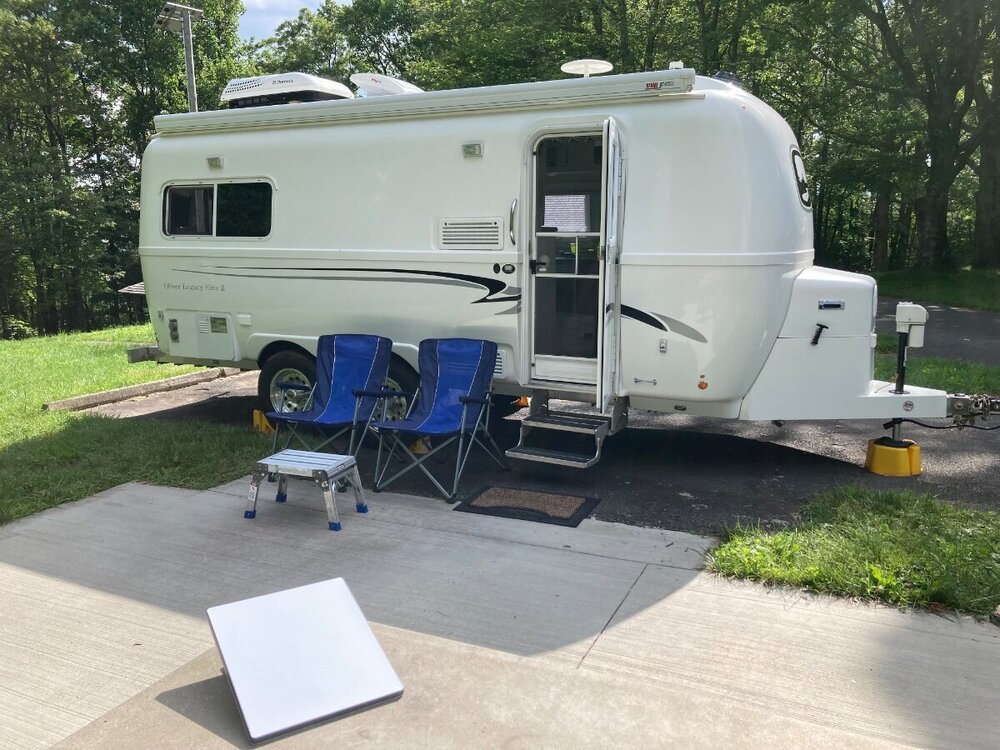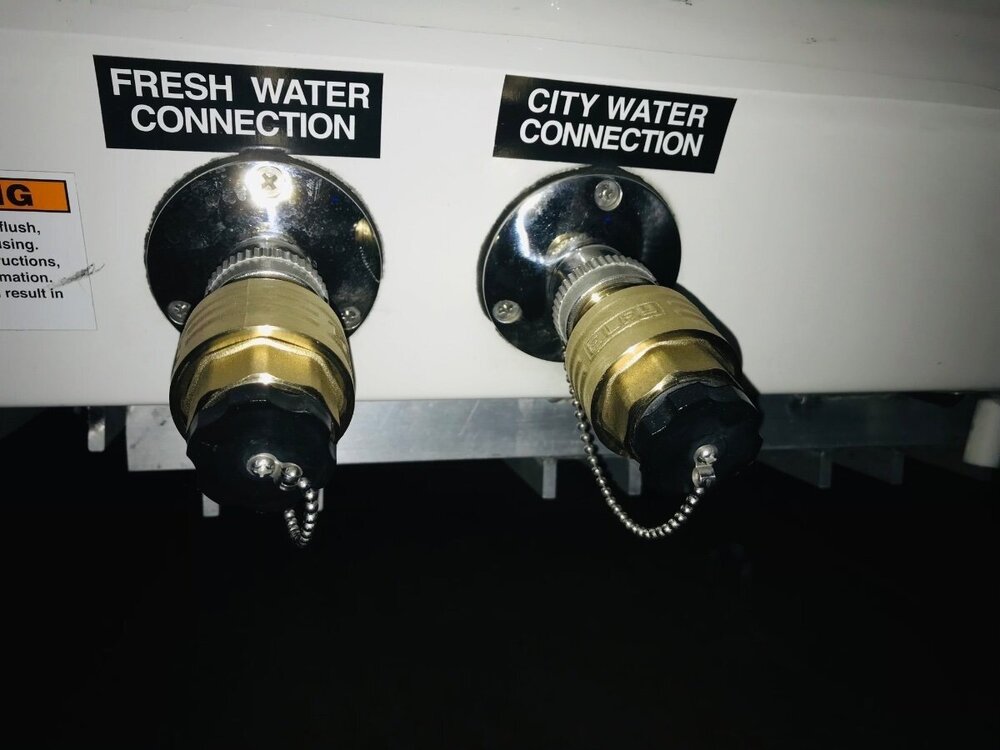Leaderboard
Popular Content
Showing content with the highest reputation since 10/06/2024 in Posts
-
I completed our new Nova Kool R5810 AC/DC refrigerator installation before our trip to the 2025 OTTO's Rally and the 3 week shakedown was everything we hoped for! I want to thank all of the early adopters, Try2Relax, MountainOliver, Geronimo John, Ty J and rideadeuce, who preceded my installation and shared there experiences. I have attached a few pictures that are similar to those that have already been posted. I would also like to shout out to David & Kristine Hess, Cooper Jenkins and the rest of the folks at Sea Biscuit Metal Designs for their help and creation of the upper and lower vents for my refrigerator installation. If you need something custom made from metal, they are my goto team! Mossey21 points
-
I have been chasing down the solution to a Norcold refrigeration problem for 18 months. My fridge worked well on AC, so so on DC and inadequately on propane. The best it would do on gas was 7-10 degrees in the freezer and only 50 in the fridg section. We do a lot of boondocking and really wanted to keep the gas option. Here are the various steps I took one at a time without success: Pulled the fridge and cleaned the burner tube, changed the thermistor (3 times), changed the main board, checked the gas pressure, changed the thermostat and added a dual extra fan to the top, changed the DC board (one to the right of the main board), changed the eyebrow board, added venting, added insulation. All of these steps were recommended by techs who I paid. The last tech I hired told me that I needed to replace the cooling unit since I was wanting to keep the existing model. Unfortunately, Norcold no longer makes the N412.3 model and replacement cooling units are out of stock. I was advised to find a cooling unit from a 3rd party, order it and then pay the tech to install it. The first cooling unit manufacturer that I contacted did not make units for this smaller fridge model and recommended talking to a guy in Olive Branch MS who rebuilds cooling unit. When I spoke with this gentleman in MS on the phone, he was far more than helpful and told me that my cooling unit was not the problem. He told me to remove my burner and soak the orifice in a high percentage alcohol for a few hours, then blow it out with a compressor and reinstall. Now mind you that my flame looked fine and didn’t seem to be a problem to me or to the two professionals that previously looked at it. 80 year old Mr. David Force, owner of Cooling Unit Warehouse explained that there was a paraffin buildup in my orifice and that although my flame’s appearance didn’t visibly change after cleaning it, the temperature of the flame had been slightly below the necessary temperature. He said that a 10-degree flame difference can change everything. Bottom line, I followed David’s advice, the fridge has been working like a champ for 50 hours on propane so far. I wish I had known this before I spent 18 months and 7-800 dollars on un-needed parts. Nevertheless I am thankful that it works like it is supposed to so that we can head out next week for a month long trip. I'm posting this in hopes that someone can avoid a refrigerator adventure.17 points
-
16 points
-
We recently returned from a week-and-a-half-long trip through Glacier and Banff for my 50th Birthday. Farily last minute all 3 of my girls decided to join us on this trip. This created some logistical challenges we had to figure out. We got it all worked out but it left us with one night where no one had a place to stay except in the Ollie. That meant all 5 of us sleeping in the trailer! Who says it is just a couple's trailer, bring on the family camping 🙂 Not a great picture but had to share. The girls were great sports about it and we had a fun night hanging out and watching a movie. We ended up having a wonderful birthday trip through Glacier and Banff. It was our first time in Banff and it did not disappoint. An amazing hike up Avalanche Lake in Glacier. And then we got an amazing site in Banff Tunnel Mountain II Lake Louise did not disappoint either. We also had a great time talking with our neighbor, who was headed to Alaska in their EarthRoamer (pricey little machine)! Overall, an incredible way to celebrate a 50th birthday!16 points
-
15 points
-
This is a duplicate of a post I made on the Facebook Oliver owner’s page. I’m sharing here for those not on Facebook that may be interested in a dehumidifier option for their Oliver. We were experiencing rainy and cool weather at the rally and conditions in the Olivers were getting steamy. Facebook post: Temperature and humidity outside at Lake Guntersville state park are 62deg and 94% humidity this morning. Inside OllieHaus it’s a perfect 73 deg and thanks to our counter top dehumidifier, it’s a very comfortable 46% humidity with all windows closed. No heat or AC needed. Loving life in our Oliver!! Edit: Here’s a link on Amazon for the dehumidifier if interested: Dehumidifier15 points
-
They put us on their November calendar. After running our trip, every time I sat on the old cushions, I thought it would be a shame to merely reupholster with new cloth yet keep the 9-year-old foam. When we dropped them off, I asked about new foam. He said the quality of foam for seating they carry is far superior to what we showed them in the old cushions. We went with 24x25" bottoms with 5" new foam (1" taller) and with the batting and fabric, the cushions are closer to 6" tall. We had 2" clearance under the window frames with the old cushions. The new ones just fill the opening and stay nicely. Went with the original sized 4" foam for the seat backs. All new foam, batting, fabric, zippers with newly corded edges. Chris loves the color given her Red, White and Blue Oliver theme! We spent just under $500 out the door. Which for me was better than the $350 for upholstery only. Soon, she will look as good as she tows or provides inverter power!15 points
-
I’m sure everyone is aware of the flash flood we experienced here over the weekend. We’re soggy but okay. Our neighbors north in Comfort, Kerrville and Hunt didn’t fare as well. You’ve heard about the children’s camps along the Guadalupe River that were affected, there were also homes and a couple of RV Parks. I’ve learned that one RV park had all RV’s washed away, some campers got to higher ground, some didn’t. July 4 weekend, everything was full and the river came up so fast there was little time to react. There is a huge first responder turn out, church’s, and private companies also. Our local grocery store chain, HEB, was one of the first on site with disaster recovery products, supplies and food. HEB was founded in Kerrville. I know some fellow Oliver owners have camped at Guadalupe River State Park just 9 miles from our house. I don’t have a status on the park. Please keep this area in your thoughts and prayers. There are still a lot of missing people so the death toll will continue to rise. Mike14 points
-
14 points
-
I visited Alcan Spring today in Grand Junction CO. I was impressed by their operation and service, what they were able to accomplish on a minutes notice. As a medium-sized manufacturer and automotive service company, I quickly noted their company quality, efficiency and fully capable staff (see picture of a portion of their operation). I purchased leaf springs for our Oliver, including HD shackles, new wet bolts and U-bolts (pic2). Our Oliver requires the 50.00 length axles. They measured our Oliver. For comparison they manually measured their 50.50 springs which they stock for Oliver customers. I asked them how can I go about getting the correct D52 axles for our hull. They replied that the could special order axles for me and charge me the same price as the axles they stock and buy in bulk for Oliver owners. And that's what I did. Getting my special-order axles will take 6-8 weeks and they will ship to me when ready. I was out the door in an hour. Four staff members were working together to help me. Simply put, they were awesome! I had a smile on my face, the whole way to Montrose to see our friend Ken. He was happy to see the parts, since he has a full installation scheduled soon. RE the purpose of this thread. Alcan only sells the Dexter Nev-R Lube axles. They report good reliability with these sealed bearings, not hearing of premature failures. So they do not have experience with the EZ Lube product. When asked about replacement bearings for the Nev-R Lub, they replied they would ask their Dexter rep and get me a quote. @CRM if you have a link for the correct Timken brand replacement Nev-R Lube bearings, please advise. I appreciate that @John Dorrer has posted his experience so far, and of course if/when any of us have failures, we should read it on our OTT Forum. I'll be working my installation later this summer and will start a new post documenting the job. Like I mentioned before, it will be fun getting into this! 😂14 points
-
10,000 mile update on Alcan springs: A year had passed since my dreaded roadside leaf spring break and 10,000 miles are on the Ollie with Alcan springs underneath so I thought I would provide my update. Ride height - rear bumper rides approx 1/2” higher than stock Ride performance - first 500 miles seemed a bit stiffer than stock with a few more items from counter and beds on the floor but the springs settled-in after that and there is no observed difference inside the trailer now (no additional stuff found fallen to the floor). Trailer tracks the same as stock, however visible jouncing (up and down) and side to side (roll) are observed to be less pronounced than stock. I also noticed when doing annual bearing maintenance that the spring shackles no longer invert when both wheels on the same side are jacked off the ground. Overall impression - had I known that a heavier capacity, 5-leaf spring, made in the US with US steel and featuring a design with the second leaf which extended all the way under each spring eye was available sooner I would have swapped sooner, just as I had previously done with solid stainless lug nuts and US made Timken bearings. No regrets on the upgrade from stock springs.14 points
-
We were on our Way home from the Hershey PA show when we stopped to stretch our legs. A couple came up to us and said they had been following us for about 20 miles hoping we would stop so they could see our trailer. It turned out they had a you tube channel. You never know who you might meet on the road. Bill14 points
-
Have two 30lb tanks and never even bother to weigh them. Run one tank until it's empty , switch to the full one, and then just plan on filling the empty one as soon as I can.13 points
-
The unimaginable has once again, tragically, become a reality. A large number of those lost were children. I cannot imagine the grief of their surviving families. Here's how you can help, at least monetarily. Click on any one of the links. They all need your support. The needs are immediate, but I can tell you from experience, the needs will be long, for many organizations. If you feel you can afford it, click on a monthly donation. Or, just remember to contribute from time to time. My first is always Salvation Army. They were first on site, according to my mom, when our home was destroyed by a tornado when I was a few years old. And, they do so much good, in so many ways, in every community they serve. If you're still working, some generous companies do matching funds. Sometimes, for retirees, too. You can help, outside of Texas, by giving blood, as well. May God wrap his arms around the survivors, and give them solace, and peace.. Here's where you can donate to help Central Texas flood recovery - CBS Texas https://share.google/mLDD7AfFVtWQ5fajI13 points
-
Lots to celebrate today. Having lived in other countries it is clear to me that there’s no place like the US of A!13 points
-
13 points
-
BaseCamp550 - just S of Ridgway CO, 8 miles N of Ouray, our view from the back of campsite #17 looking southeast. The tallest peak on the right is Mt Sneffels, one magnificent Colorado 14er, simply amazing! 😂 Certainly our best campsite in 5 weeks travel. An older RV park from the 70s. Though I have a leaf-blower, if I had my weed-whacker I'd clean up this site a bit. The view makes up for it and we have a triple-wide spot between a cabin, their front facing away, and the laundry which makes it private, not having RVs left and right. It's just so nice!13 points
-
13 points
-
To all those that served our great nation - THANK YOU To all those that served our great nation and didn't make it back - WE REMEMBER AND HONOR YOU13 points
-
Yesterday morning we left Hull #634 XPLOR, with Collin and Gavin owners of CGi who gave it the CGI 3 step Ceramic coating process. We really like that they kept our Oliver overnight which allowed the ceramic coating to cure for at least 4 hours inside their shop. All we could say this morning when they opened their shop door was WOW! WOW! WOW! 🤩 Our Oliver looked better than the day we took delivery June 16th of 2020. Their work is excellent and the attention to detail is truly amazing. With over 130 Oliver Travel Trailers under their belt they truly are masters at their craft. The CGI team knows exactly how to take care of ALL things Oliver gelcoat. We also had our windows and wheels ceramic coated along with everything white on our Oliver. This was an excellent seamless experience and a valuable investment in our Oliver. 🌟🌟🌟🌟🌟 Patriot 🇺🇸 One of several of their YouTube videos-13 points
-
I've seen similar filter and water softener additions. Here's mine. I recently saw that James at FitRV released a single 2.5" X 10" water filter element to replace the standard 3-stage system. I've considered one of the smaller 3-stage systems as an upgrade, so I thought I'd give this a try as a less expensive alternative. Of course using one 3-stage filter instead of three separate filters is going to mean a shorter interval between replacement. But the cost difference should be negligible, and I won't have to find a place to store a 3-stage system. Here's the FitRV video and article: YouTube: https://youtu.be/t_SQNVapBEw?si=FfufAl7n4p_80Eys Web article: https://www.thefitrv.com/rv-tech/our-new-rv-water-filter-the-fit-rv-3-in-1-filter/ I bought a cheap filter canister from Amazon, that arrived with horribly oversized 3/4" NPT pipe threads, and enough slop that the filter moved over 1/8" up and down. That's not going to work at all, so back it went and a GE housing was ordered. Much better! I assembled with a 3/4" NPT to 3/4" GHT (garden hose thread) on each end; one male-to-male, and the other male-to-female. Then I gave it a test fit on Curiosity's rear bumper. Dummy! The hoses would interfere with the trailer body and the drop down sewers cover. :facepalm: Back to Amazon for a pair of 90° 3/4" GHT male-to-female connectors. In hindsight, I should have used a 90° 3/4 NPT to 3/4 GHT set, but looking today, I couldn't find that combination. This also allowed me some flexibility in the angle of the input and output. Back when I ordered the Oliver, and spent those agonizing months waiting for delivery day, I accumulated a bunch of bits and pieces to get ready to go. (Didn't we all?) One was an adjustable water pressure regulator. I didn't realize that Oliver would supply a fixed 40 PSI inline regulator, and the inline unit was convenient to store with the Camco inline water filters I've been using. So now's the opportunity to get it off the garage shelf and put it to use! I drilled and tapped two threads into the side of the bumper support, and screwed and LocTited in two stainless screws. These are used to hang the whole contraption while in use. It'll be stored in my bucket during transport. I hope this is helpful for anyone wanting to upgrade from an inline water filter. List of components: GE Filter Housing: https://a.co/d/7cbaS28 FitRV 3-in-one filter: https://a.co/d/b0NzDt8 Camco 4' Potable Water Hose: https://a.co/d/eVeV4BJ 3/4" NPT to 3/4" GHT fitting: male-to-male (2-pack): https://a.co/d/5MopLFL 3/4" NPT to 3/4" GHT fitting: male-to-female 2-pack): https://a.co/d/dE1gWDC 90° 3/4" GHT Elbow: male-to-female (2-pack): https://a.co/d/24kw8xO Teflon tape for NPT threads Total cost: $133 plus tax Question: The fixed pressure regulator that came with the Oliver is 40 PSI. I've set the adjustable water pressure regulator to the same 40 PSI. What pressure do those of you with adjustable regulators use?13 points
-
FYI: Quartzite "Proving Grounds" -- We opted-in on a Solar Tracker at the owner's rally last year which Coy and his business partner, Joe designed. It's been running straight through since arriving at the Q last Monday. The tracker uses onboard GPS, MPPT charge controller, and other programs to "track" the sun's progression throughout the day. It stows itself at sunset then "wakes" up after sunrise, resets its position and its 200W solar module angle to optimize power generation. Even with the low winter sun angles here at the Q, the tracker get's our 300A-Hr Battle Borns back to 100%SOC by noon-ish to 1pm. We're still putting it through its "shake-down" cruise during this trip. More later...13 points
-
I updated my batteries with assistance of a friend who does solar installs for a living. This is a bit different than most of the installs I have seen here in that we used two 400 AH EG4 rackmount batteries. After removing the rackmount handles from the batteries and the battery tray from the Oliver they fit perfectly. There was a bolt in the bottom of the battery cabinet that was an issue. We put in 1 inch square aluminum rods on the floor of the cabinet to raise the batteries above the bolt head. We also replaced the Xamp solar charger with a Victron solar charger 100/30, added Victron lynx shunt, Victron distributor, and Victron cerbo with a touch screen (7" model). This fit perfectly in the hole left by the removal of the Xamp solar charger. To get the cables from the cerbo to the touch screen I ordered an extra HDMI extension cable and USB cable (approx. 15'). I ran the cables to the back of the camper in the tray behind the cabinet and then down the wall in the back, under the basement, and back up under the street side bed. Trying to pu the wire down next to the pantry would not work. It was too tight. I believe Victron is planning on replacing the HDMI cable with the small USB connections this spring. Didn't help me, but maybe it would help you. In addition we added a solar disconnect which you can see below. In the pictures below. These batteries can be powered off and the breaker thrown to disconnect. They also come with automatic fire suppressants, two per battery. Cost was $1200 per battery (400 AH, each). This was the first stage of the upgrade. At some point I may replace the Xantrex 2000 inverter, but for now it works well for us. Unfortunately the Xantrex and Victron do not talk to each other. That is why you don't see information on the touch screen about the AC loads and AC input. We have taken it on a couple of trips now and we do not come close to making a dent in the batteries. I added an extra battery in case we need to replace our 3-way fridge in the near future. So far it is doing well. I replaced a power board on it a while back, but since then no issues. Parts are harder to come by now though.13 points
-
My wife Jane (Hospice nurse) and I (former Bosch employee) retired earlier this year and after a cross country trip to California from home base in Chicago by car, decided we needed to investigate trailers. We had followed Oliver for a year or two, and looked at fiberglass truck bed campers prior to purchasing this Elite2. Very happy with our decision - but making many rookie mistakes as we weren’t camper prior. So far, only correctable mistakes and a few serious close calls! We head to Hohenwald tomorrow for a factory tour. Currently enjoying Green River Lake State Park in Campbellsville, KY ( beautiful park)! hope to meet you all in our coming travels! Rich and Jane Walker13 points
-
12 points
-
I always thought that it we had a blackout or local crisis, God forbid a forest fire (we live in the Prescott NF) that we could get in the Oliver and relatively quickly get to safety! Those of you in hurricane climates should certainly understand the idea! We keep ours as many of you do, 95% ready for the next trip. We start the fridge, stock the pantry, pack clothes, fill the TV with grill and lawn chairs, all kept in one area of a shed, and we're ready to go in little time. So we just got back from a 5-week trip, washed and parked the Oliver Saturday. Were out for the day yesterday and when we returned the house felt hot. Later is was apparent our home A/C was not cooling, thermostat set at 77F was 83F actual. We didn't sleep well last night, opened the windows where at our elevation we got down to 75 hours after the blazing Arizona sun had set! Called for service and the best they could do is Wednesday afternoon. We plugged in the Ollie this afternoon. We are back to camping the next two nights on the edge of our property! 😂12 points
-
This will be a first for us, though common to many of you who have more time for travel. I have 6 weeks off work, for our personal longest camping trip ever. I was inspired by a post our friend Steve @ScubaRx made last year where wrote that he and Tali often travel across country without reservations! This is difficult for the Project Manager in me, but should make for a spontaneous and exciting adventure! First stop just 5 hours from home, we’ll stay 2 nights up at 7760 ft in this beautiful McGaffey Campground SE of Gallup NM.12 points
-
Mike, Good to hear you and your family are OK. We have been following this tragic storm aftermath closely. So sad to hear about this after our recent hurricane in NC. One of the charities we like are normally on the ground quickly in disaster situations like this one. Will do on the thoughts and prayers for everyone in the area.12 points
-
12 points
-
New Mexico is a wonderful state in its hidden treasures from the area NE of ABQ (where Art lives) up to Santa Fe and to Taos NM, then further up to Raton NM for the Santa Fe Trail Balloon Rally (we just happened by this rally when moving from VA to AZ back in 2005)! Then there is Ruidoso! It's Gods Country in Lincoln County NM of Billy-the-Kid and Smokey-the-Bear fame. Don't travel across southern NM without spending some time here. The area is named the White Mountains of NM, wild elk and feral horses walking the city streets daily and so many cute carvings Smokey is shops everywhere. If you're ever traveling through Albuquerque and need breakfast, lunch or dinner, or just great sides to go, like their amazing salsa and beans, Mexican meats and stews and much more, you've got to stop at the Frontier Restaurant. Just one exit S on I-25 of I-40, head a few blocks east on Central. This is my 4th visit here but the first time I parallel parked with an Oliver! (There was a car behind me when I parked and just a narrow alley in front). It worked out great and we could even keep an eye on our rig from the window seat! Chris had the Taco Salad and I enjoyed the Frontier Burrito, pints of salsa and beans to go for upcoming campsite dinners!12 points
-
12 points
-
Hi, new to the community, having bought hull #1165, a 2022 LE2, on January 2nd! I've gained lots of pre-purchase info browsing these forums as a guest and would like to start off with a thank you! I appreciate everyone's help so much! Paul12 points
-
Wishing everyone and their families Merry Christmas and Happy New Year! Bill and Debbie LE2 #75 North Carolina12 points
-
I decided to chime in on this because I don’t think you’re missing anything, your discharge rate is perfectly correct! All the given advice is good, but it’ can be a bit miss-leading to fully understand whats going on. I hope to provide a better explanation, and show you a simple and very accurate way to check your “parasite” loads, which I’ll refer to as normal “stand-by” loads. Your 390 amp hour battery with a daily discharge rate of 3% equates to a loss of 11.7 amp hours over a 24 hour period. This further equates to a stand-by load of 0.48 amps, which is not overly excessive considering all the electronic devices in the Oliver. Devices with memories, remotes, touch lights, rain sensors, USB ports, electronic boards, etc., can each draw milliamp currents even when turned off, and they do add up quickly. I took some current readings from my own trailer to show you what I mean. It’s the same year as yours and it also has a 390 amp hour battery. Remarkably, the values add up to exactly the same current as your calculated load. But more importantly, it shows that there is no single extraordinary load: Fuse 2, Various electronics = 0.117 amps Fuse 4, Furnace = 0.012 amps Fuse 5, Main lighting = .003 amps Fuse 6, Fans = 0.016 amps Fuse 7, Water heater = 0.113 amps Fuse 8, Radio = .204 amps Fuse 9, USB outlets = 0.007 amps Fuse 10, USB outlets = 0.009 amps Total = 0.481 amps These measurements were done with a precision multimeter having a resolution of 3 decimal points. My Victron shunt has a resolution of 2 decimal points and it showed a lessor current of 0.42 amps. My Clamp-on Amp Meter has a resolution of 1 decimal point, and it showed a higher current of 0.5 amps. This demonstrates how subjective and inaccurate some of these measurement methods can be when dealing with such small milliamp values. Another potential misconception is that the Lithionics BMS App will provide the overall charge and discharge values. It’s only true to the extent that it provides values for the battery selected, but not for each battery combined. For example; the 390 amp hour package consists of three 130 amp hour batteries. If the overall load is 3 amps, then the App will show each battery discharging at 1 amp. Additionally, it’s only accurate to 0 decimal points so it won’t show anything less than 1 amp. This is another good justification for installing a Shunt. There are a number of ways to measure stand-by or parasite current, but the easiest and most accurate way is with an inexpensive Multimeter through the fuse box. It will show the load of each circuit, but not each component on the circuit. Thats okay because some of the individual component loads are too small to be accurately measured anyway. Caution: When using the ammeter function, the meter is in-line with the circuit. This means that the current is running through the leads and meter. So don’t use it with loads greater than it’s rated maximum current, which is typically 10 amps. Before testing, make sure that everything is off including the inverter/charger and solar (Solar switch is in the street side overhead cabinet.) Make sure shore power is unplugged too. Pull each fuse one at a time and the red LED “blown fuse” indicator will light-up if there is any load. Put your ammeter leads on each leg of the fuse socket and read the current. Add up the values and you will have an accurate overall stand-by load. FYI, the inverter/charger does not go through the fuse box, but it will add another 0.2 amps load if left on. I keep my trailer undercover without shore power and the batteries also discharge rather quickly. In fact the shunt screen shot below shows that it will discharge in 10 days. I considered adding a battery master switch, but it wasn’t a viable option for a number of reasons which is why I believe that Oliver doesn't install them either. I ended up getting an auxiliary solar panel, with charge controller, and I mounted it on the roof to keep the batteries at 100%. It was better than running an extension cord and risking complete discharge mishaps. Hope this helps Cheers, Geoff12 points
-
I am currently acting as the Service Director overseeing the service department & technical support. Jason B. & Mike will be handling more of the daily activities while I will be putting a bit more time in traveling to our dealer partners assisting with Sales & Service training. I would say 75% of the time I will still be here onsite working with Rodney in sales & Jason B & Mike in service.12 points
-
Milton made landfall at Siesta key/Sarasota around 8:30. Moving very fast. Damages from wind, torrential rains, and tornadoes will be seen in a big part of the state. No power in many many places. About a quarter of our county, so far. My extended family and friends have all reported in. Safe and good.12 points
-
We were on our first long trip consisting of 2 to 3 months in the Ollie ( mostly Boondocking) . We were about 2000 miles from home in Billings,Montana and had stopped in a parking lot for lunch. I went to wash my hands and the water pump wouldn’t work. I noticed when I put pressure on one side of the switch in the bathroom it would pulse on like a momentary switch. I removed the screws from the bathroom caddy and carefully scored the caulk. When I removed the caddy all the wires fell off the switch. I had no idea which color wire went where. After a call to Oliver and with their help and research I used a pair of pliers to gently tighten the wire connectors and pushed them back on the proper spade. The red wire attaches to the center spade on the right side and the grays on the outside spades. I have two pictures that show the switch. Hopefully this post will help someone who might experience the same problem.11 points
-
There's definitely a lot of cool places to see enroute from NM to the White Mtns of AZ! We had a blast traveling with @Geronimo John and meeting @jd1923 and his lovely wife and wonderful chef, Chris, and their puppy, Charlie! Above -- a couple Olivers, and a couple knucklehead huskies at the Very Large Array west of Socorro, NM at 6,800' Above: Close-up of one of the 27 VLA radio telescopes (90-foot diameter) that look deep into the Milkyway in the radio frequency spectrum. Definitely worth the time spent to visit this place. Above: Looking for @jd1923.... Above: AH! They can run, but they can't hide from us! Typical afternoon monsoon weather in the White Mtns... Above: Beautiful campground in the Whites... Lots of elk and turkey: A couple knuckleheads trying to figure out what to do with those big 4-legged friends... Above shows a nice flock of Rio Grande Turkeys at about 8,750' enroute to our campsite... Above -- Hannigan Meadow Lodge on AZ Hwy 191 at 9k' -- absolutely fantastic! All in all -- it was a wonderful 5-day, 635-ish mile run from Placitas, NM... Thanks, @jd1923 and @Geronimo John! Plan this one for 2026! Best, A & D (...and the boys - WOOF!) (PS: A couple Olivers preparing for dinner and adult bevs -- note @Geronimo John's ice maker on the table!)11 points
-
Just before leaving on our current trip, I covertly made a new cherry table and installed it to the surprise of wifey. She had wanted to keep the Oliver’s stock modern look, which is understandable considering that the house is already full of custom wood pieces. But after using it on this trip, we both absolutely love it! If I were to choose to have only one Oliver modification, it would be the enlarged table! The original table was small to fit between the seats for a third bed, and it is barley big enough to fit much more than a two piece place setting. The new table is 28” x 37” (about 10” longer and 5” wider) and it makes a huge difference to have the extra tabletop space. We can now fit the computer and our place settings. I realize not everyone has access to a wood shop to build such a table, but there are consignment woodworkers just about everywhere that could easily do it. As wood working projects go, it doesn’t get much simpler to joint and glue planks together and sand them flat. Many hardwood lumber shops even have wide belt sanders available to flatten tabletops. You could even have a lumber shop cut a nice piece of hardwood plywood, round the corners with a saber saw, and dress the edges with real wood self-stick or iron-on edge bands, just like they do for kitchen cabinets. I recommend experimenting with a cardboard template to determine the optimum size to fit your body types. I also remember a guy who advertises wooden accessories on this forum who might sell larger tables. Anyway, it’s a worthy project or expense to think about! Cheers, Geoff11 points
-
11 points
-
Happy 4th of July to Everyone Here!!!!!!!!!!!!!!!!!!!!!! We are spending our time waxing Ollie in the shade today! Like the scaffold folks here mentioned, bought it on sale at Home Depot and working great!11 points
-
I finished my first visit to Idaho this week, and it was a great trip, though I wish I had more time. Coming from Jackson, my first stop was Craters of the Moon National Monument & Preserve where I managed to land a spot in the Lava Flow campground (FF and somewhere in the fine print, they warn people not to pull trailers past a certain number). The park is generally viewed by driving along a loop road, with some parking at various spots. There are opportunities to hike up and around lava formations, as well as climbing down into lava caves. It was very windy! I recommend the hike up the Inferno Cone (a stiff hill that is longer than it appears) where you can see the Great Rift, the Snake River Plain, the Pioneer Mountains and the Teton Range 100 miles to the east. Entry into the caves requires a free permit from the Visitor Center (with instructions from staff). The campground was okay; it's in a lava field so the sites are arranged around the landscape.11 points
-
Manti - La Sal National Forest, Devils Canyon CG, Utah...45 degrees this AM (furnace on) woohoo! Spending the night in a hotel in Moab for 41st wedding anniversary and doing the tourist thing. We tackled some awfully wicked hiking trails today in Canyonlands NP and will need some time to recover tonight. John11 points
-
Doughton Park NC on the Blue Ridge Parkway. We head to the BRP to beat the heat this time of year. After the hurricane last year, many areas are still closed, but repairs are being made and areas slowing reopening. No electricity or water at the campsites but Ollie handles it fine with a portable solar panel. Directions to Doughton Park, take Rt. 21 to the BRP to the Park. Doughton Park Picnic Area: Air Bellows Overlook:11 points
-
In the past, several people have gotten camping spots for the next years rally. At this time I don't know the exact dates yet and wanted to advise not to secure any spots for next year until I can finalize the dates. I will be speaking with the campground and shoring up the dates and will let everyone know as soon as they are set in stone.11 points
-
We pulled into a campground for the night in Ft. Stockton Texas, I started to unhitch and noticed that the front jack foot was loose. I tightened it and checked the other two. The rear ones were tight. I checked them all right after we purchased our trailer in 2017 and haven’t thought about them since. Probably something to check periodically and will add some blue loctite to each bolt. Probably not good to lose one, at least I’d hate to run over one.11 points
-
Your working too hard 😊. We have been using eley hose quick connects for several years and they have served us well and do not leak. A quick and simple way to hook up our water hose sans pliers. https://www.eleyhosereels.com/products/garden-hose-quick-connectors?srsltid=AfmBOorhl73lbWlG-pTRQ_aHjougxYv88x-aD4DfsGjJACCyuZjoAX0t More info here -11 points
-
My camper has a 3000 Watt Inverter and the Lithium Pro Package. Right after a camping trip last November I noticed my batteries were not charging on shore power at home. I discussed the issue with Oliver and they recommended I take it to a shop and have the surge protector examined. Rather than take it to a local dealer. I setup an appointment at Hohenwald (it's only a 5-hour drive for me). Yesterday I went to Oliver and they worked on the issue. At first Oliver thought it was the inverter which they replaced. However, this did not fix the issue. They then re-checked the surge protector and found the wire from the EMS to the breaker panel burnt as well as a burnt connector. They put my old inverter back in and replaced the surge protector and the batteries now charge. The work was done quickly, professionally and I was charged for only what was actually needed. While it was there I had them fix a couple of other small issues and grease my fittings. This is my second trip to Hohenwald for work on the camper since it bought it new. I am very happy that we can still go to Oliver for work and really appreciate that we can set an appointment and reasonably expect the work to be done timely, and well. It was nice to be able to drive up Sunday, drop off the trailer Monday morning and then drive back home Monday night with the trailer.11 points
-
We are all going down the road towing an earthquake through a hurricane. No screw ever gets tighter with vibration, it always loosens. I go completely through our Hull #50 at least once a year and check all bolts and screws for tightness, especially the electrical connections. I’ve preached this for several years on multiple platforms. You can’t blame a manufacturer for a loose screw on a a product that you’ve used successfully for years. The impetus is on us to maintain the product through regular inspections and maintenance.11 points
-
Ah, yes, the Oliver Motorhome. They never sold well, possibly due to the lack of a windshield. You don't see them very often.11 points
-
Recent Achievements






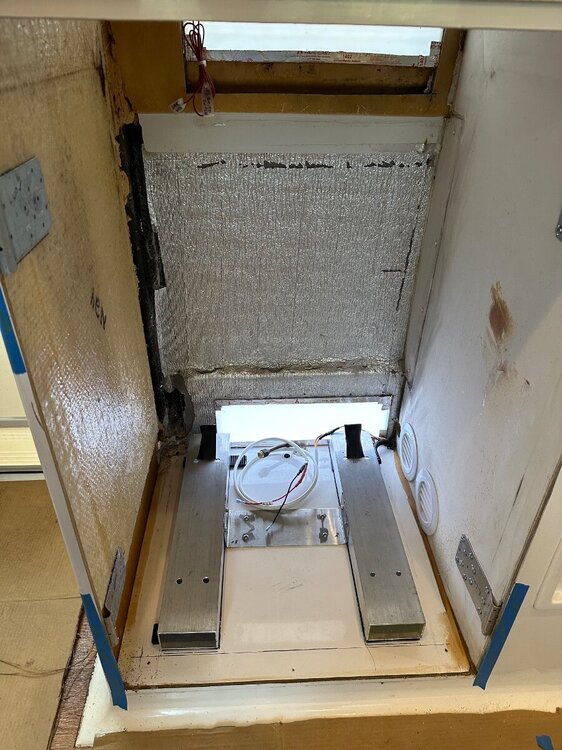
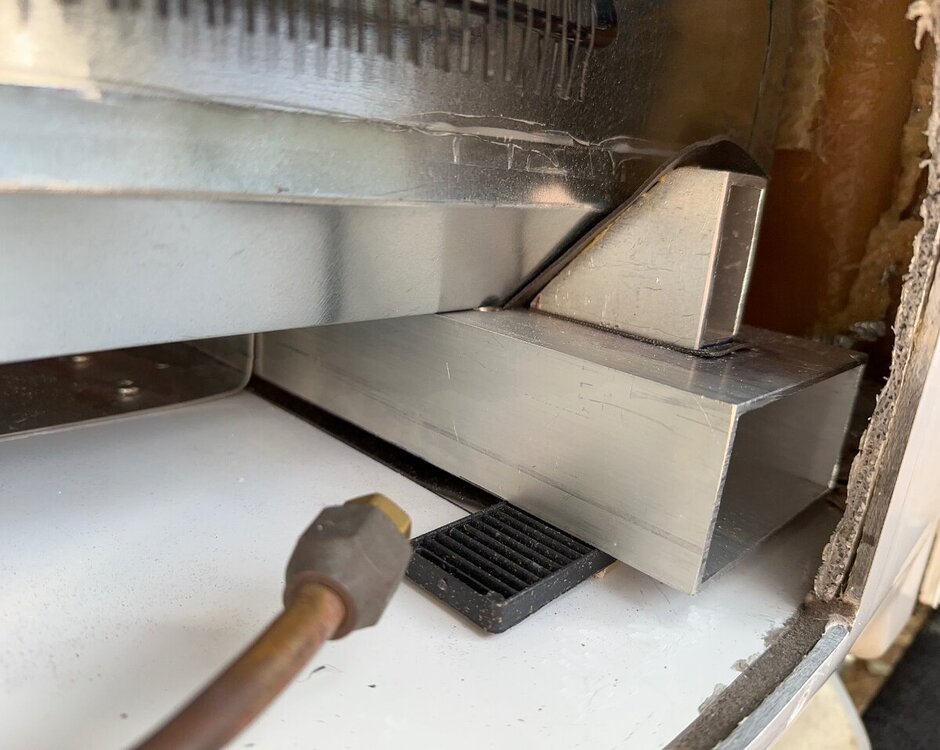
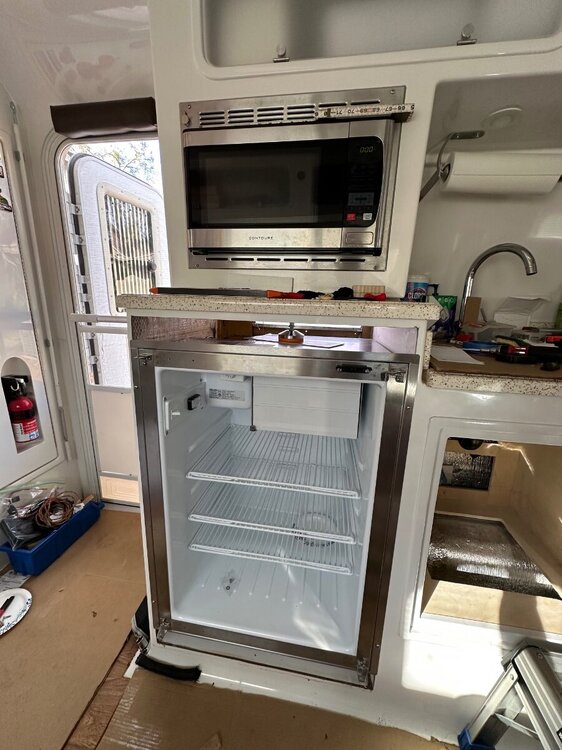
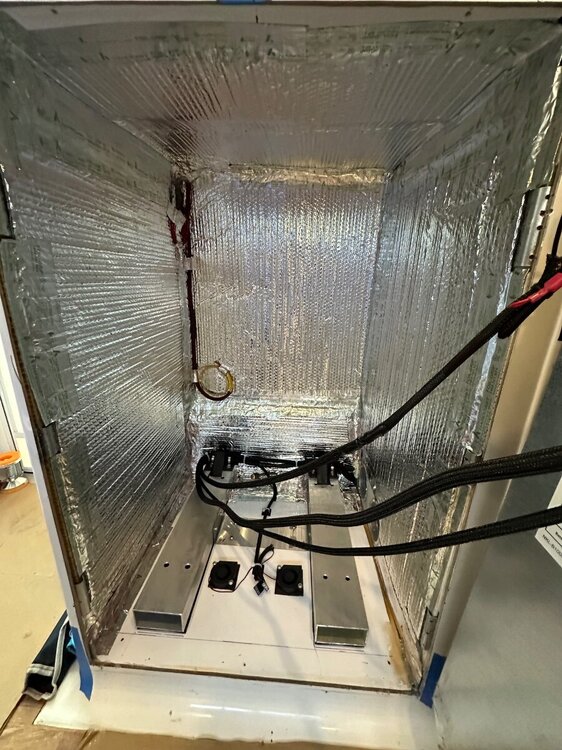
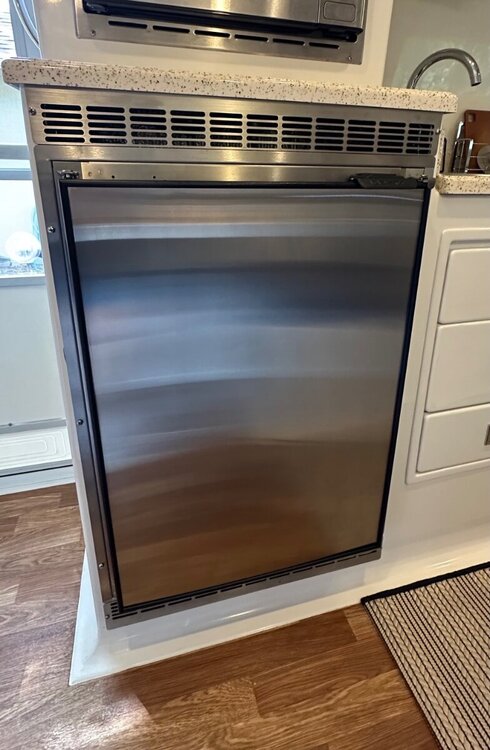
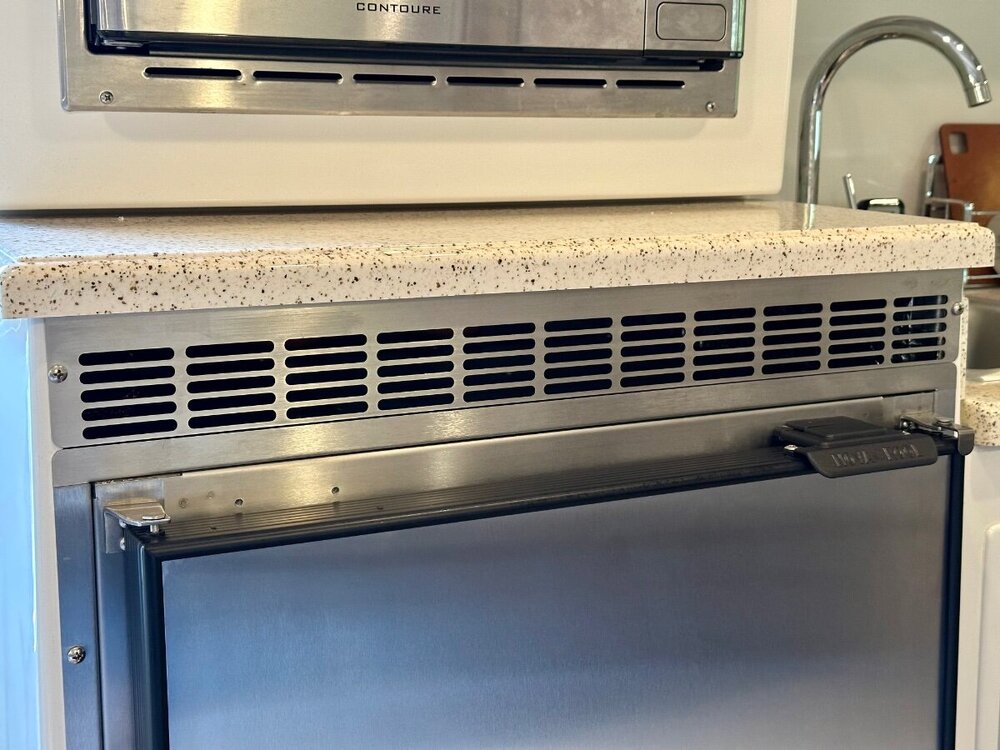
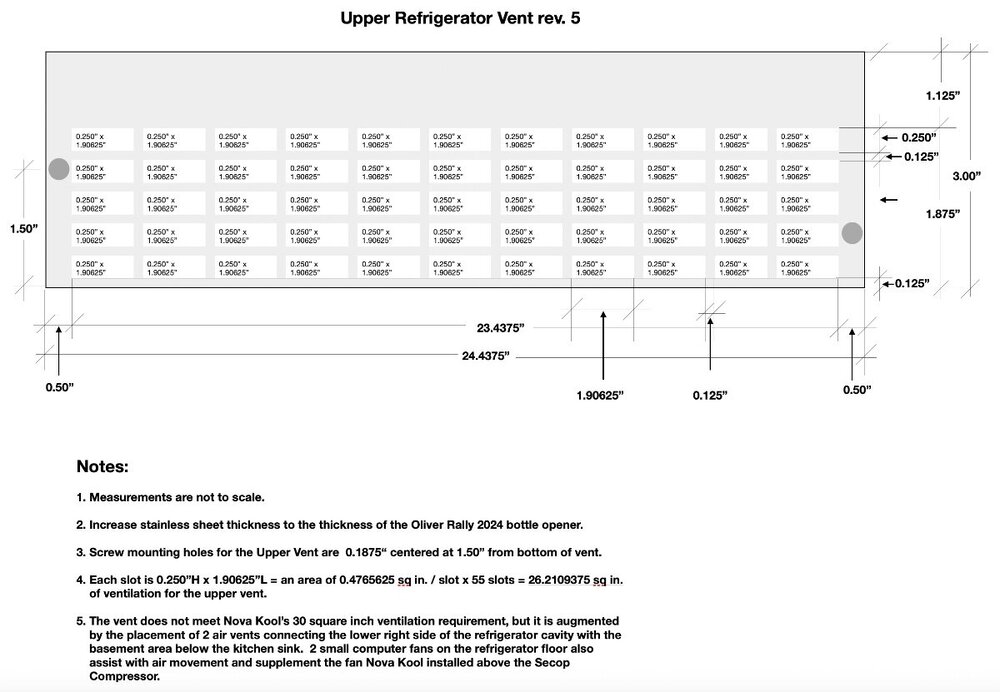
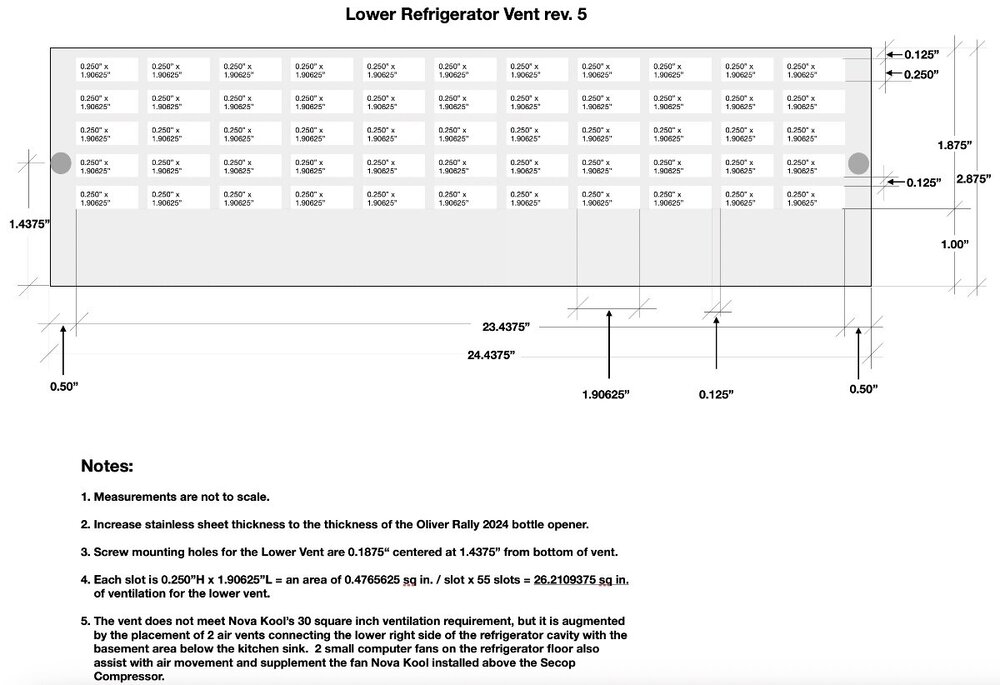
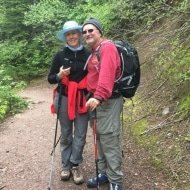


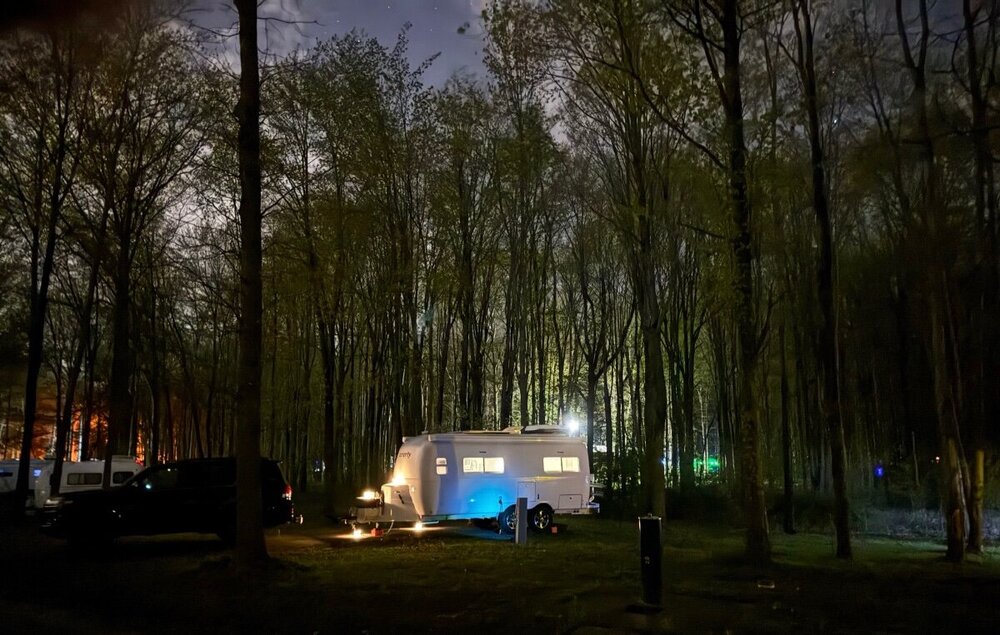
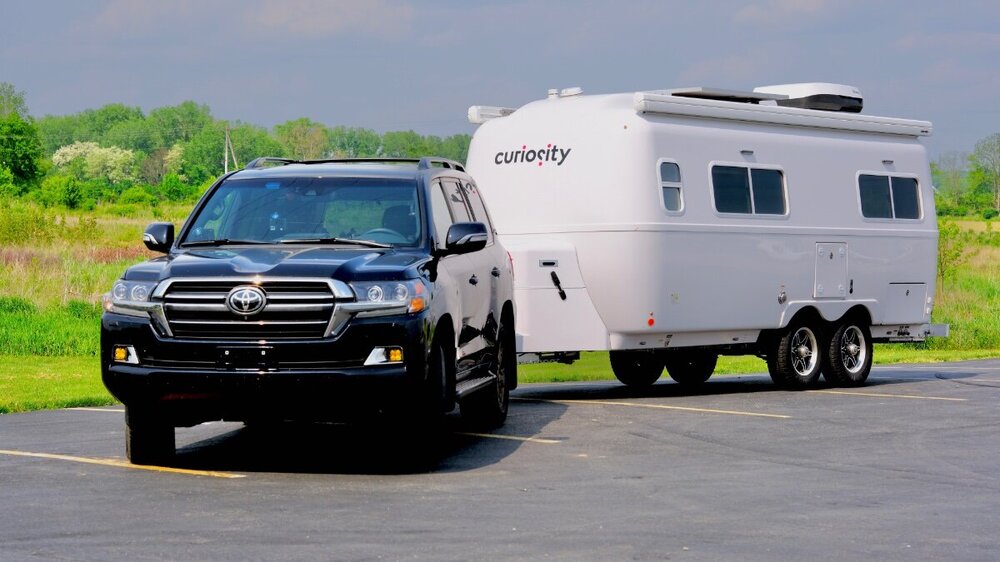
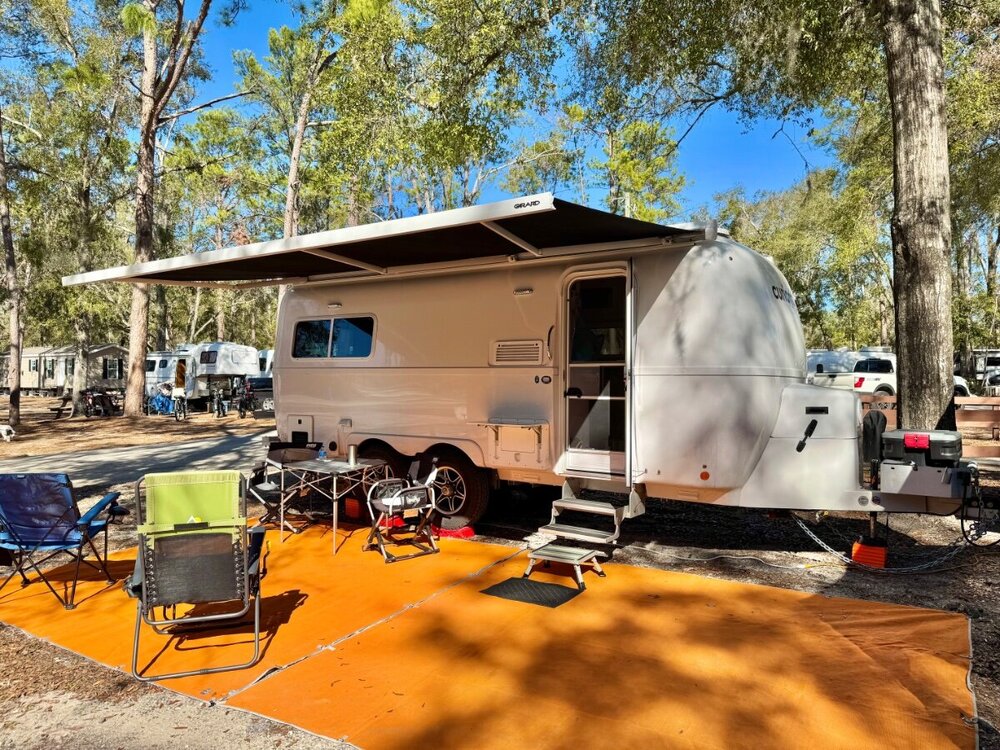

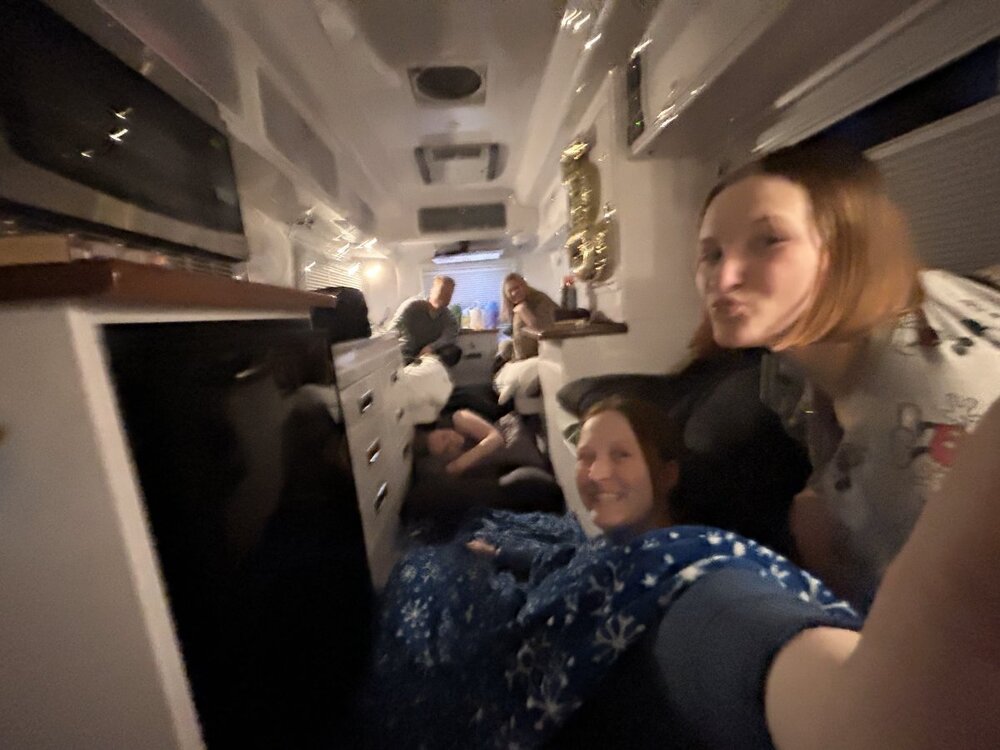
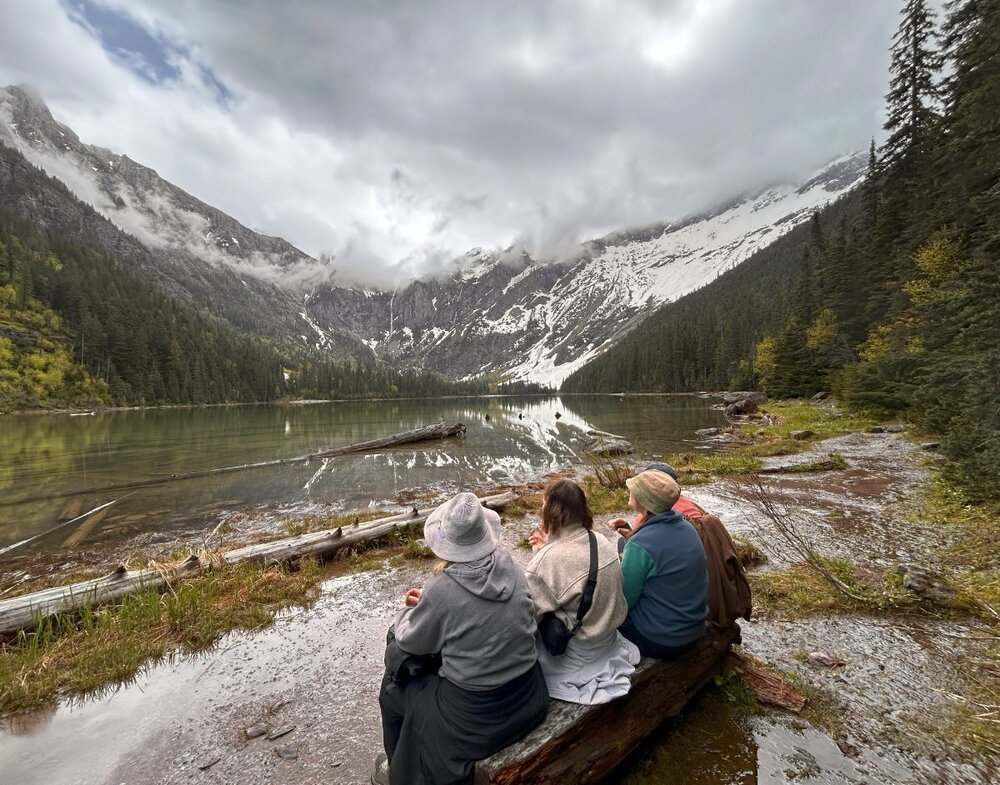
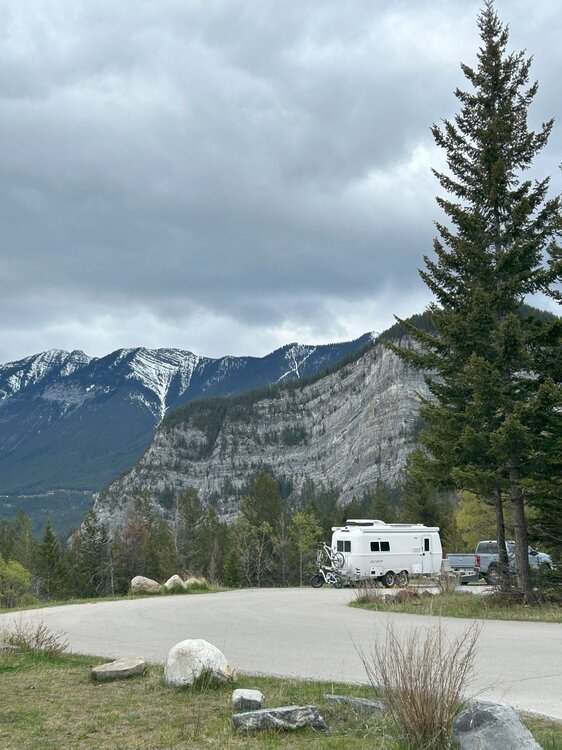

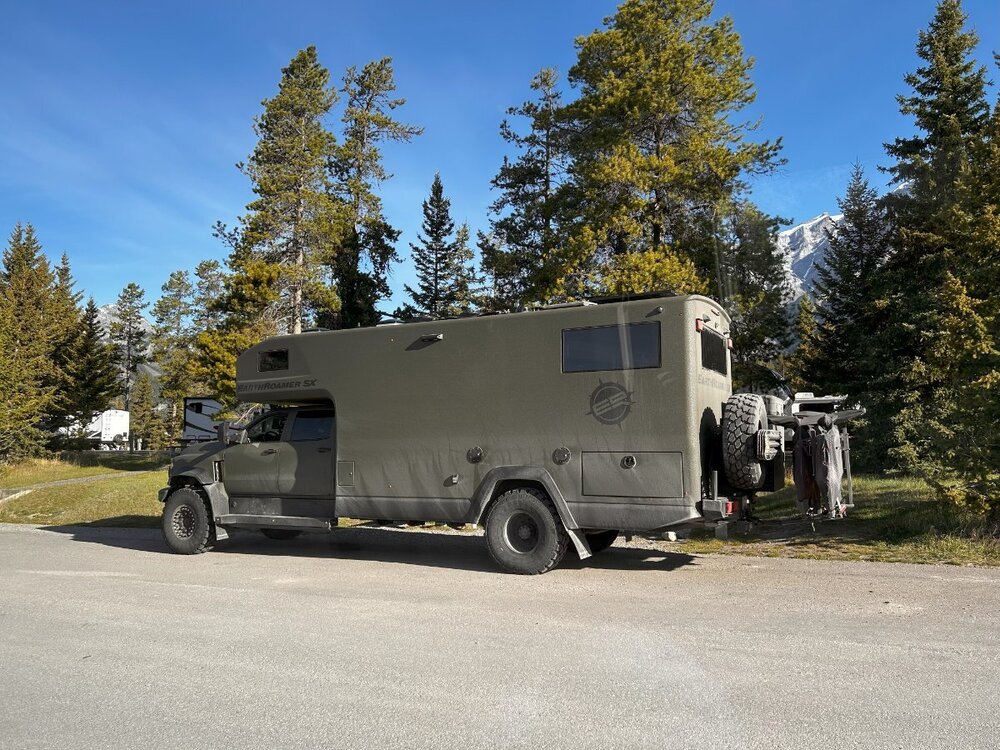
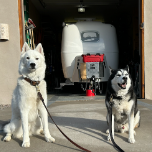





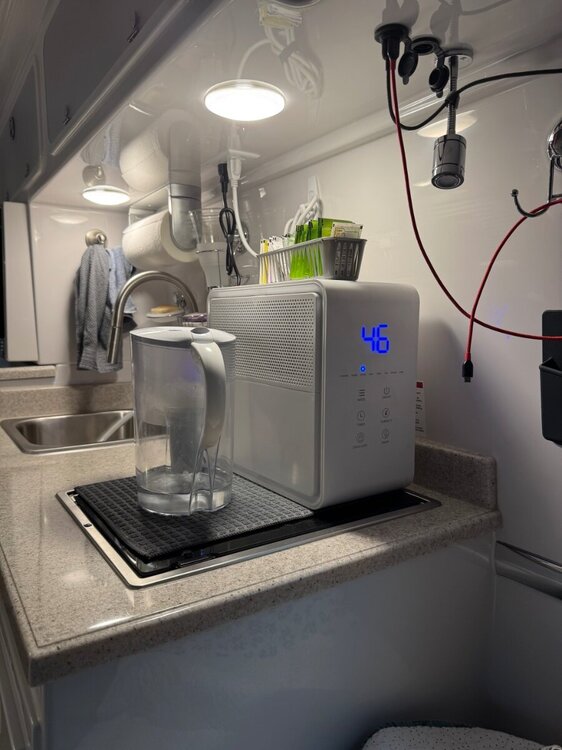
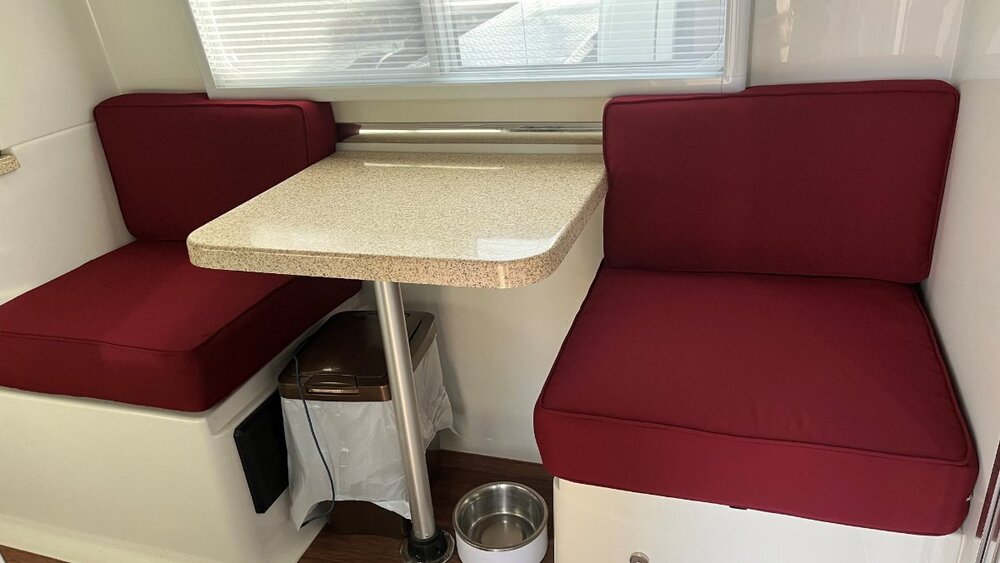
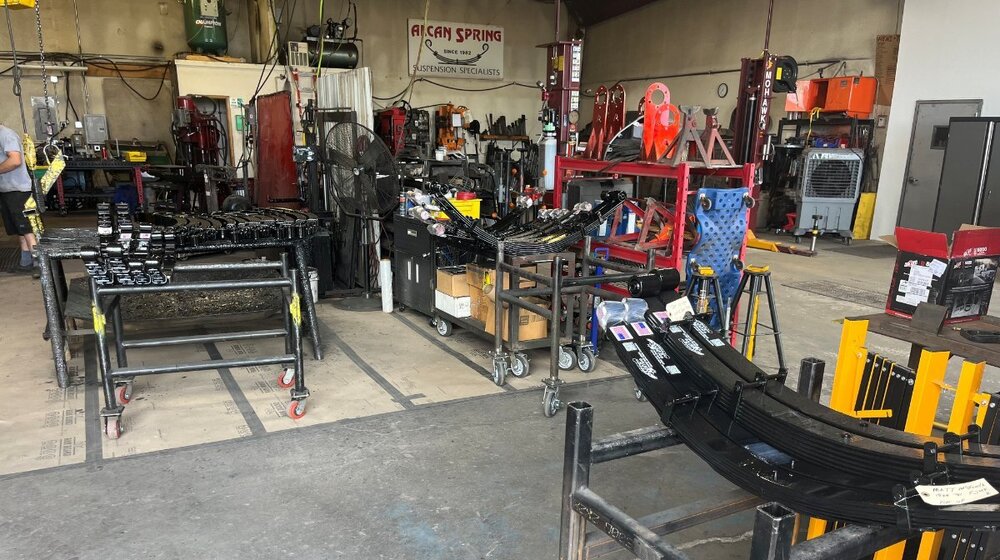
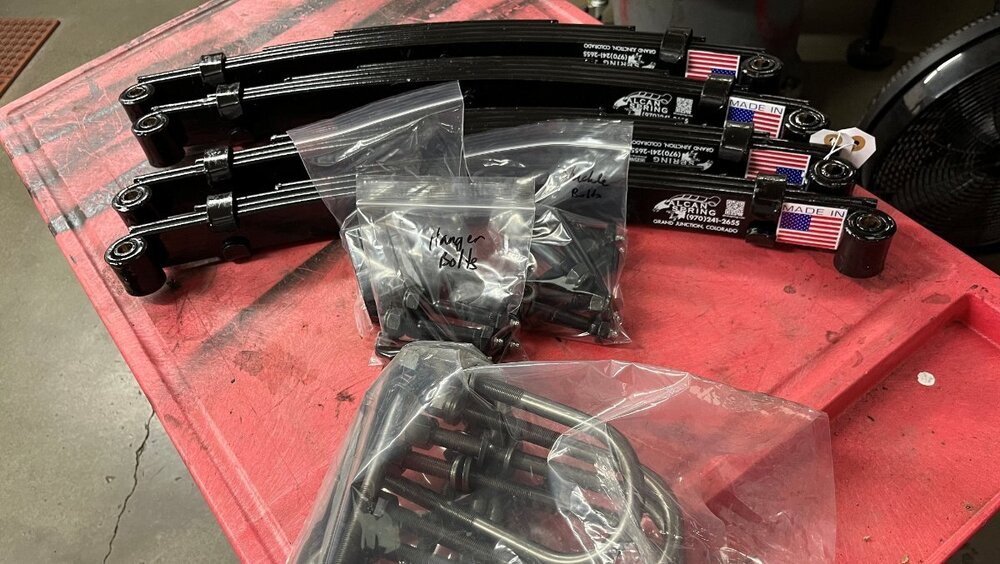

.thumb.jpg.e34bf01ef7f7d5e99ad31856d45afbeb.jpg)

